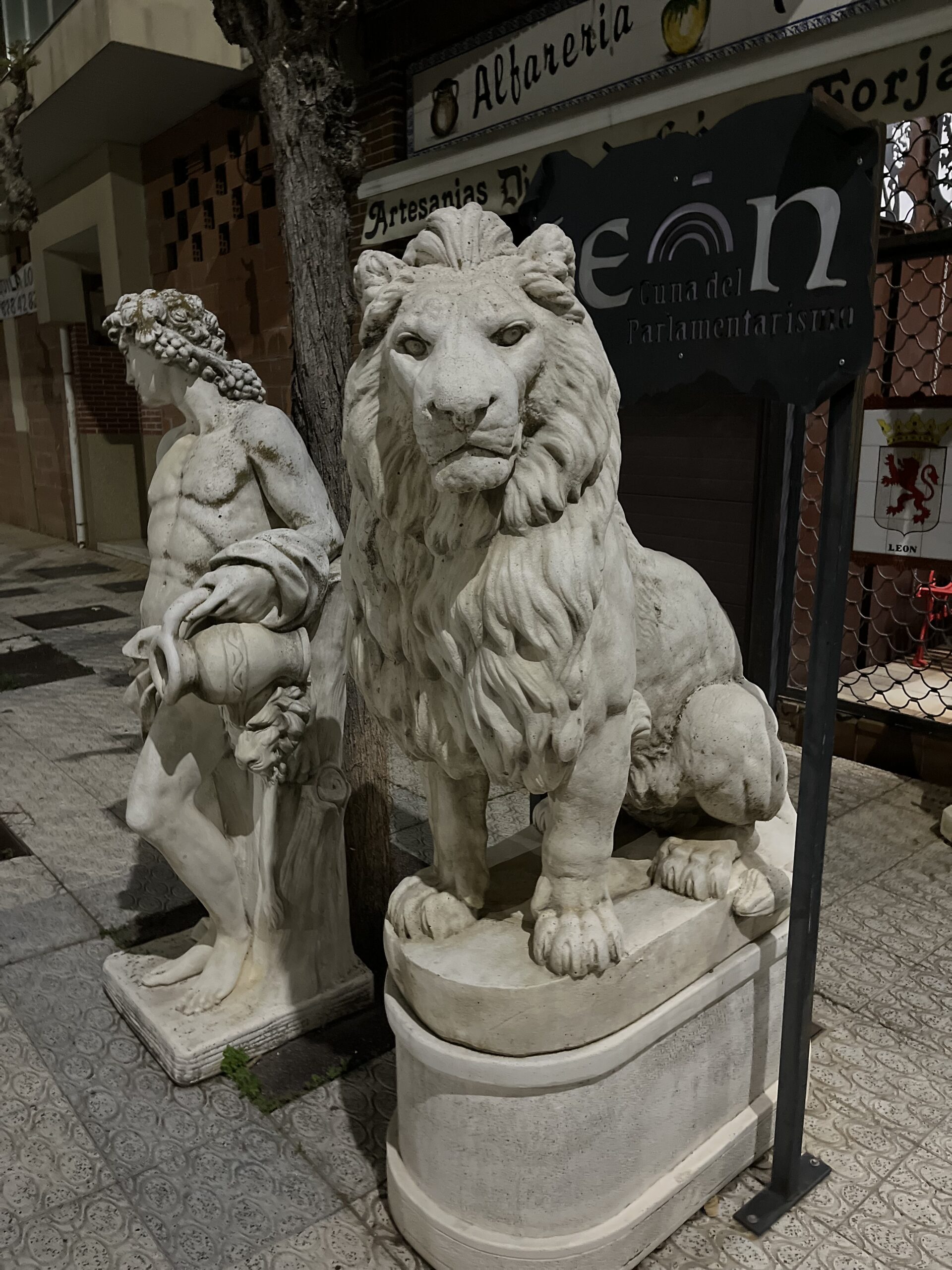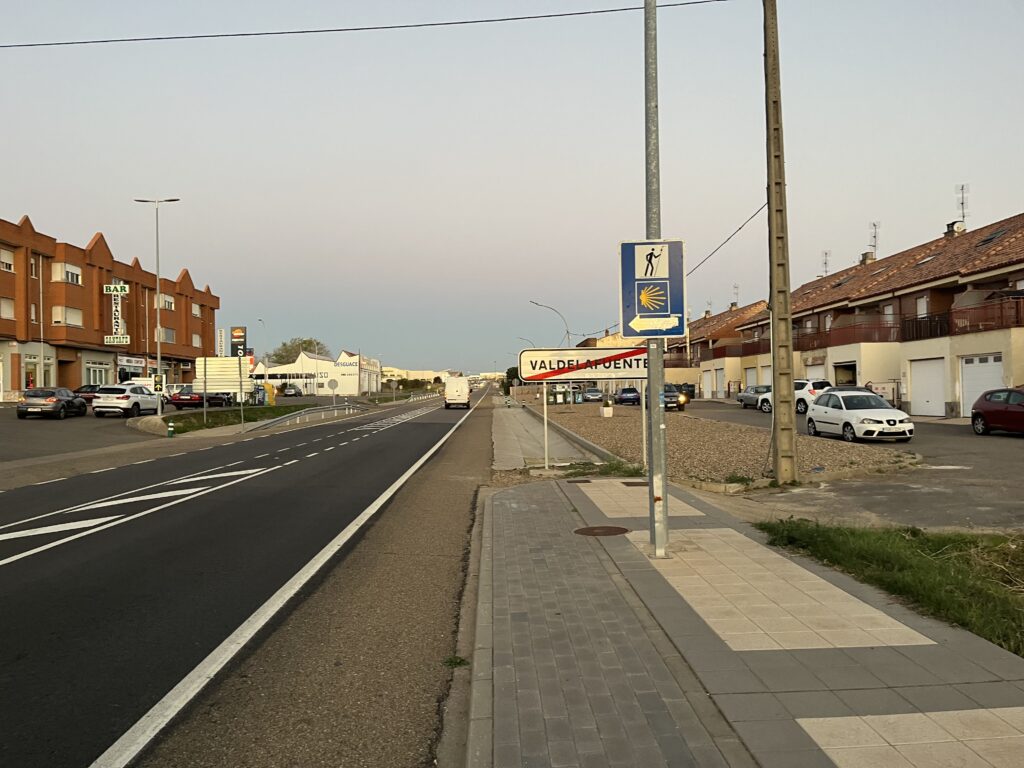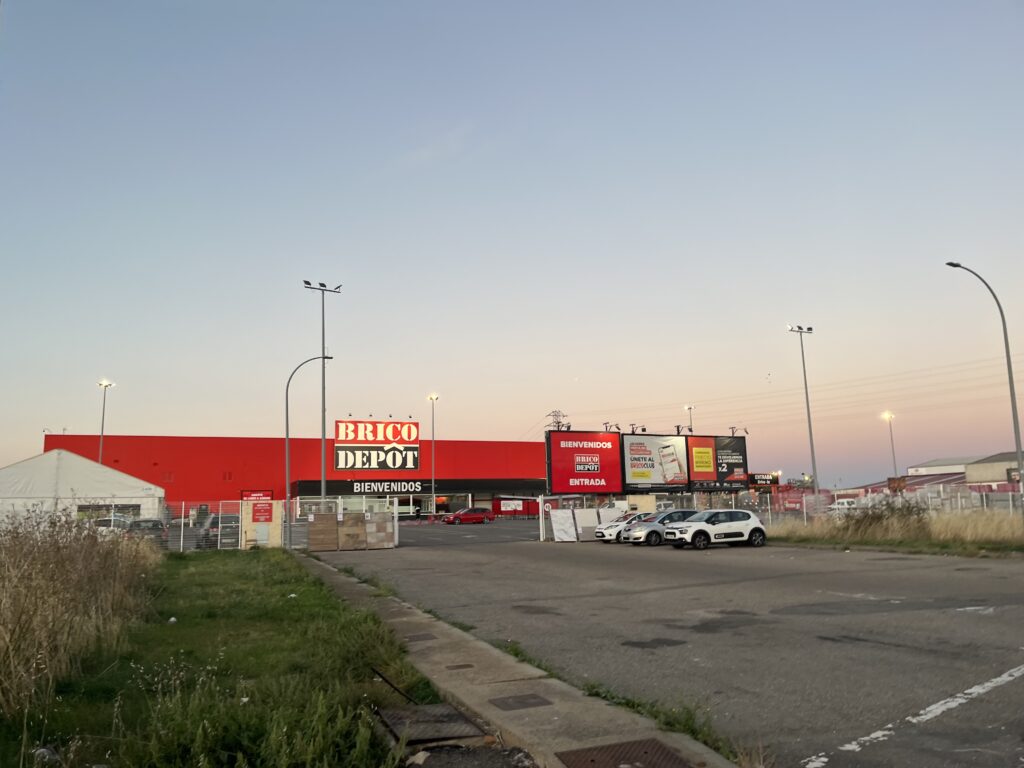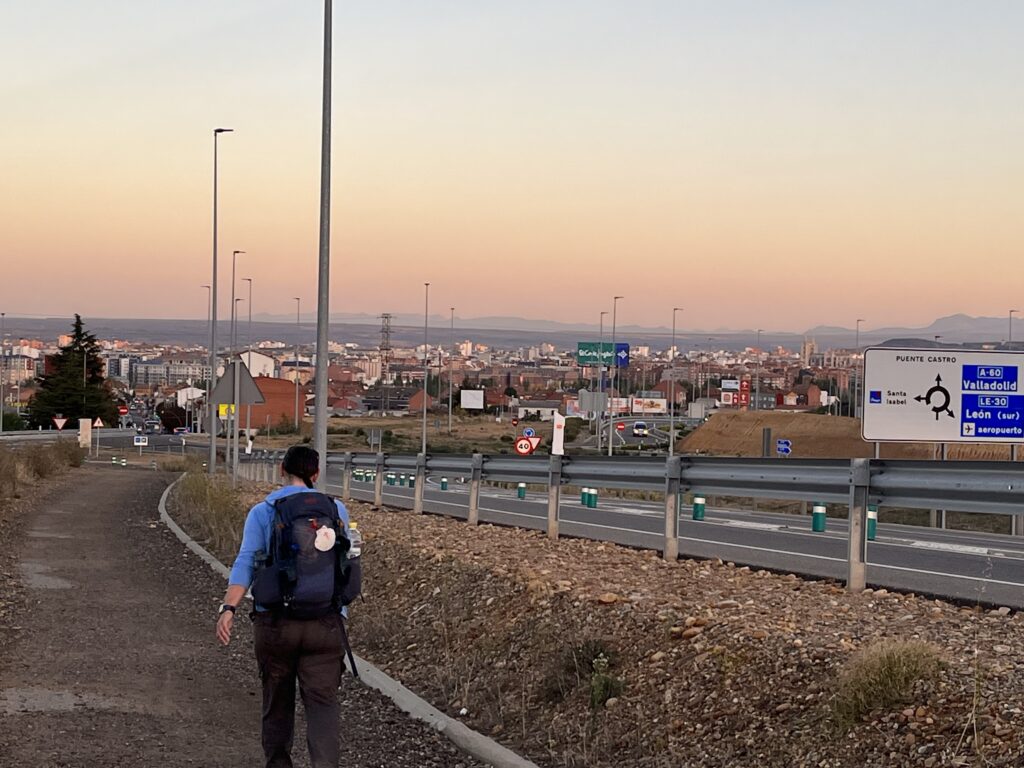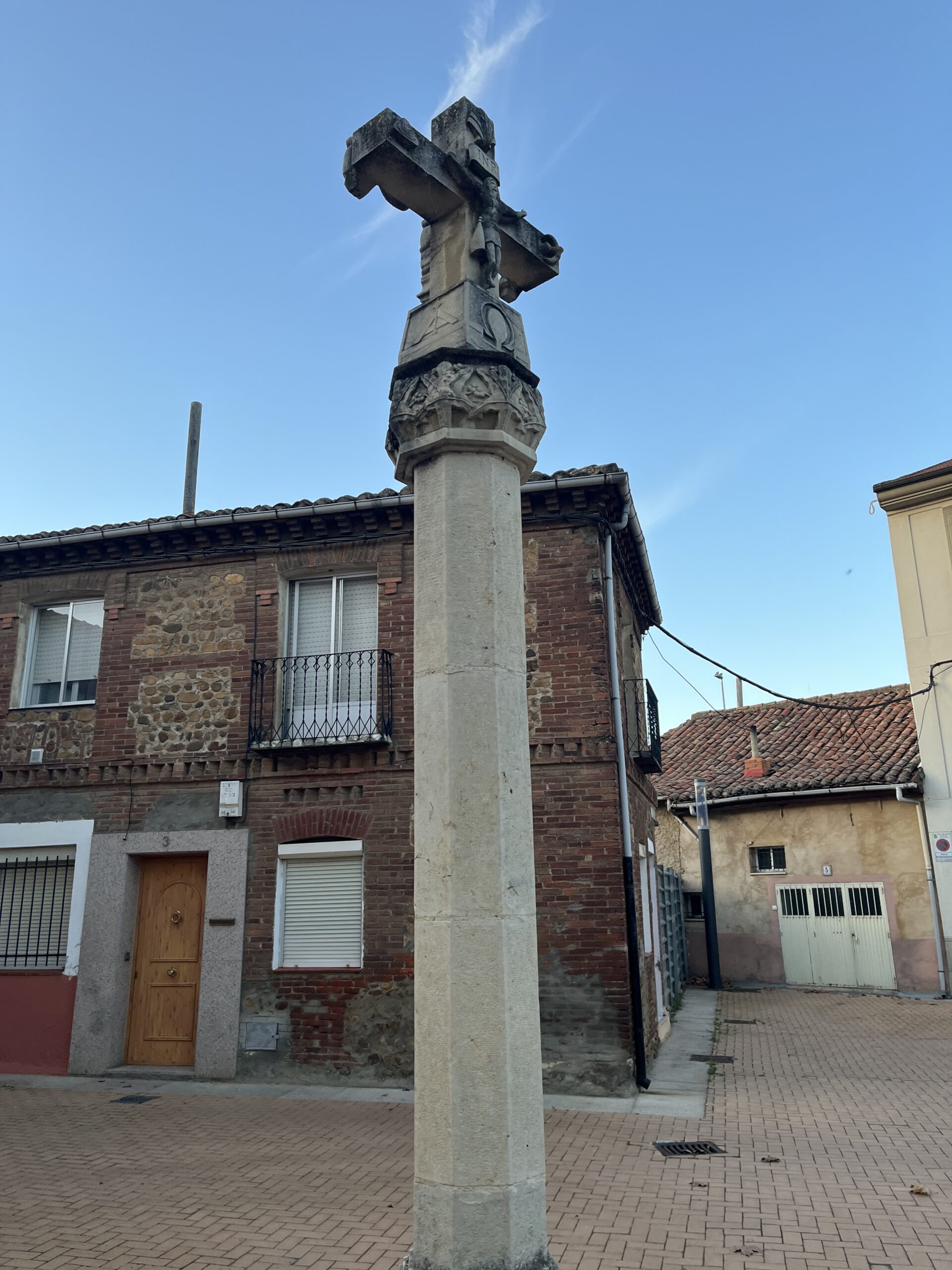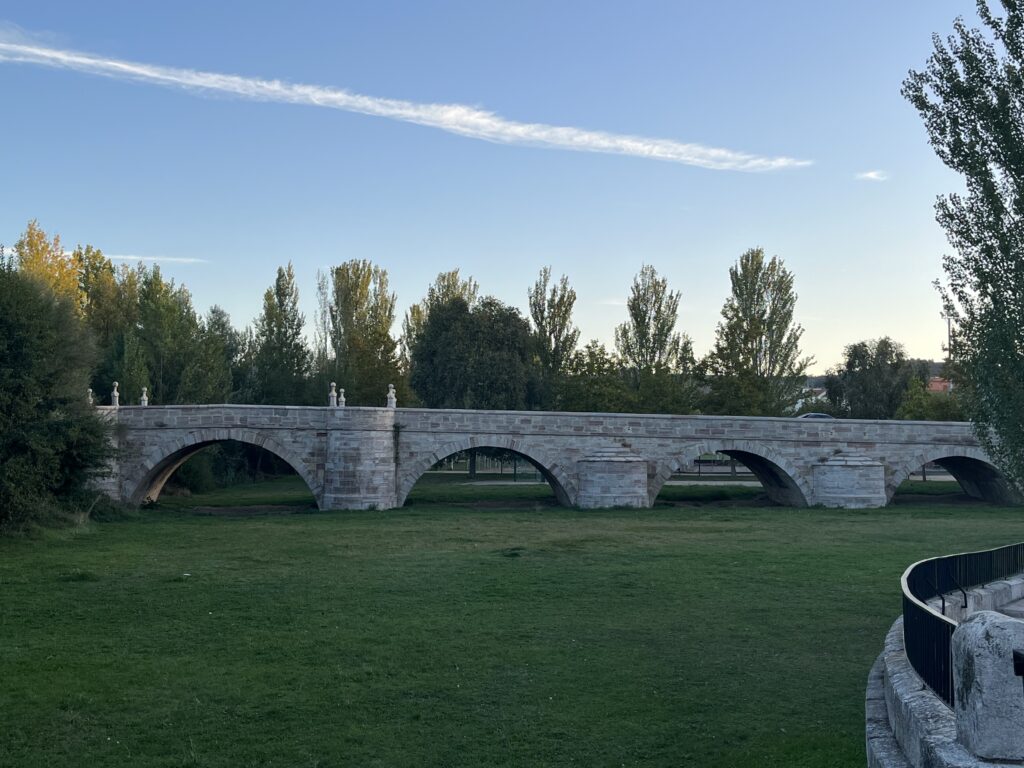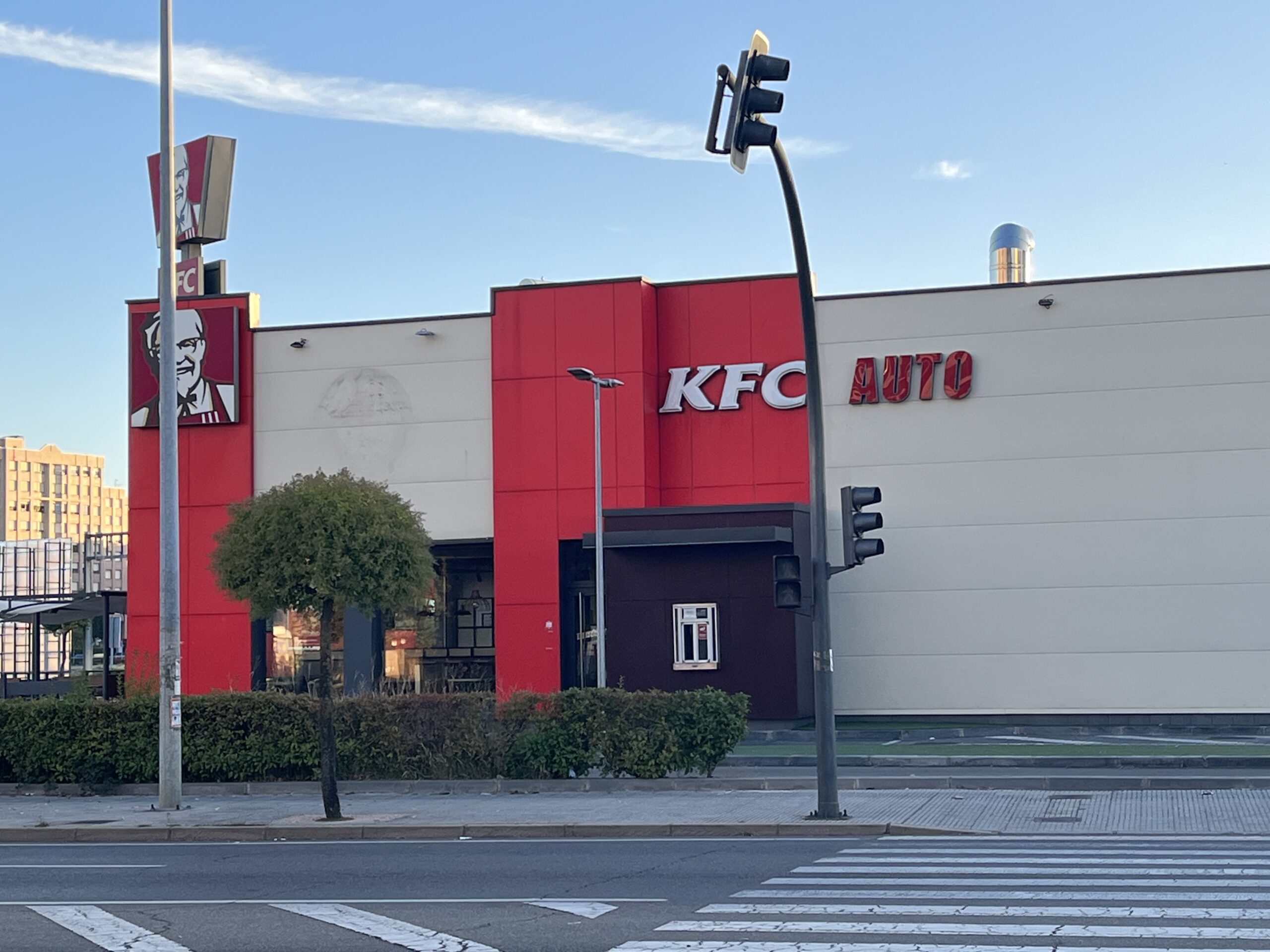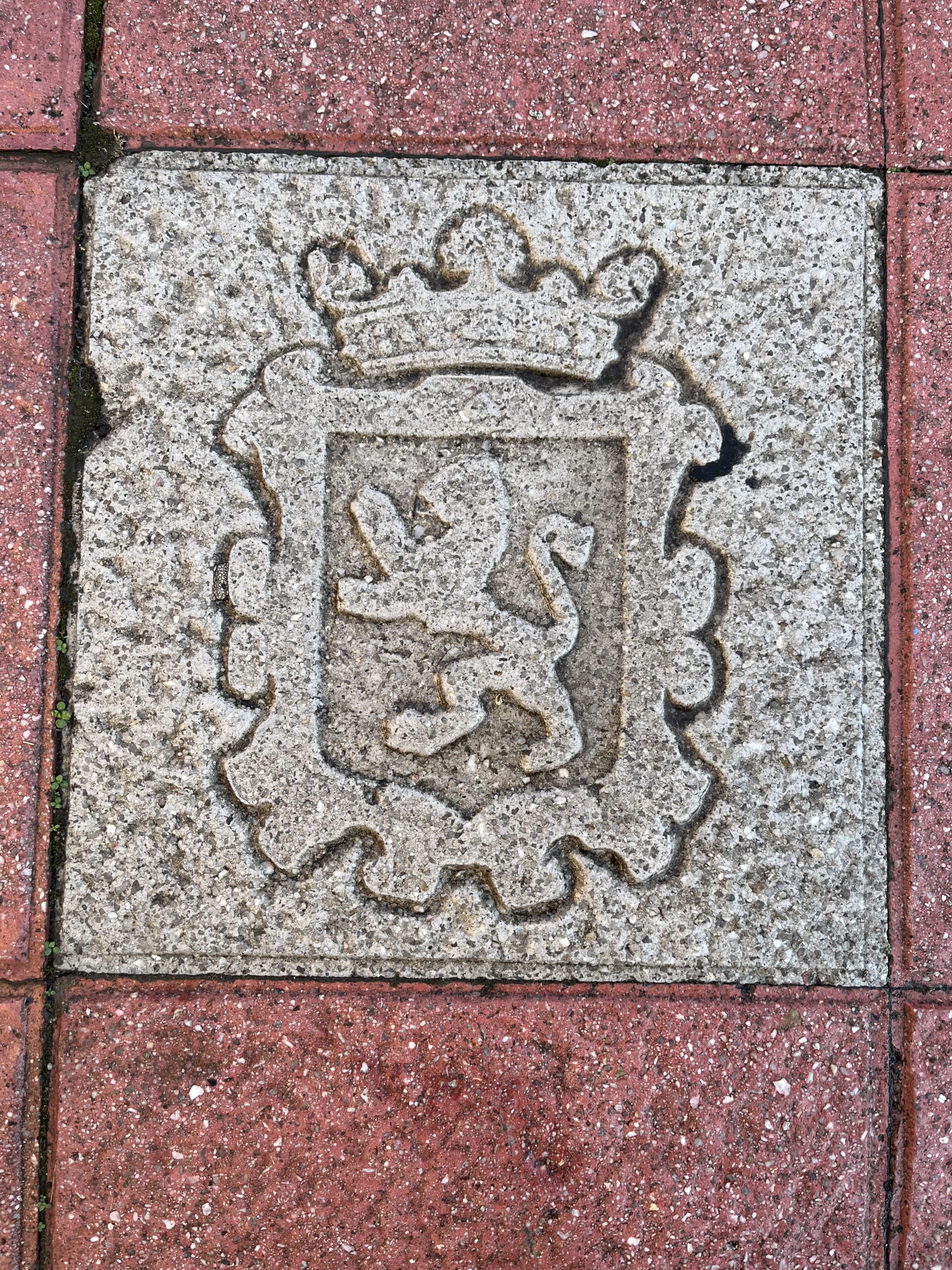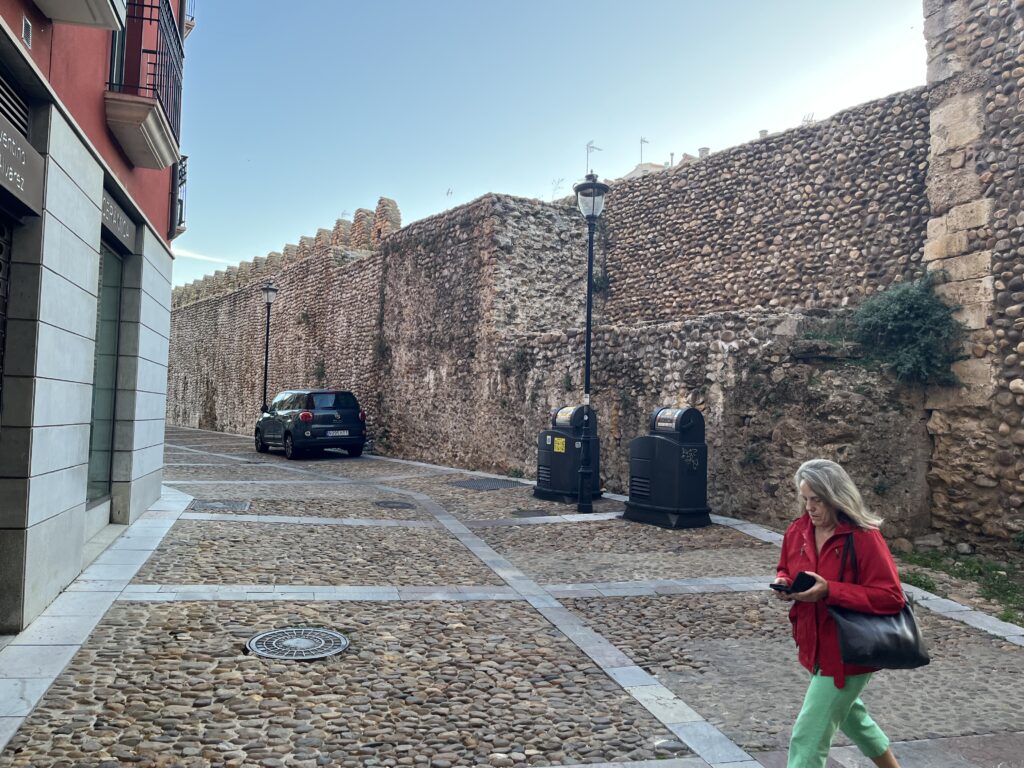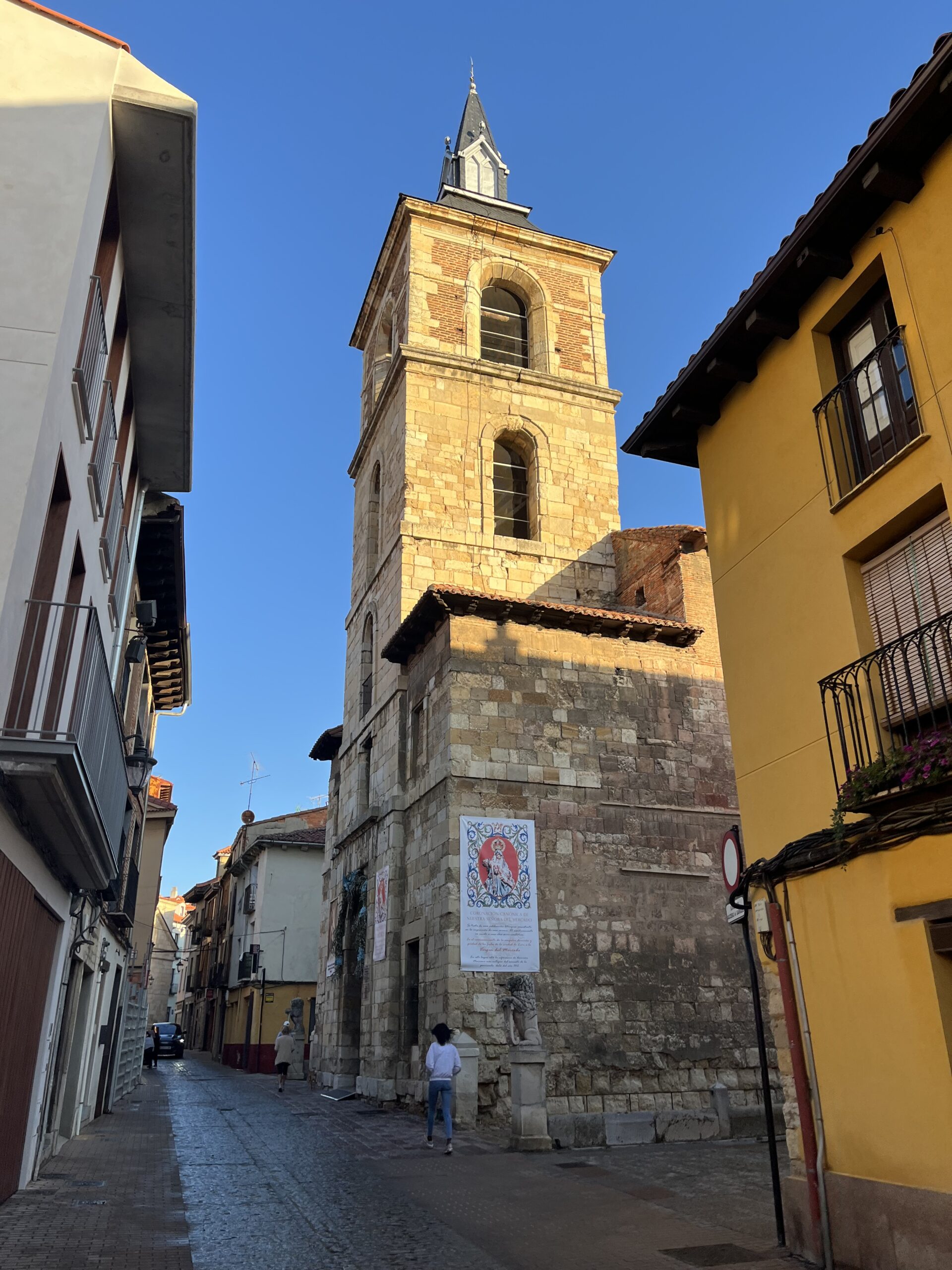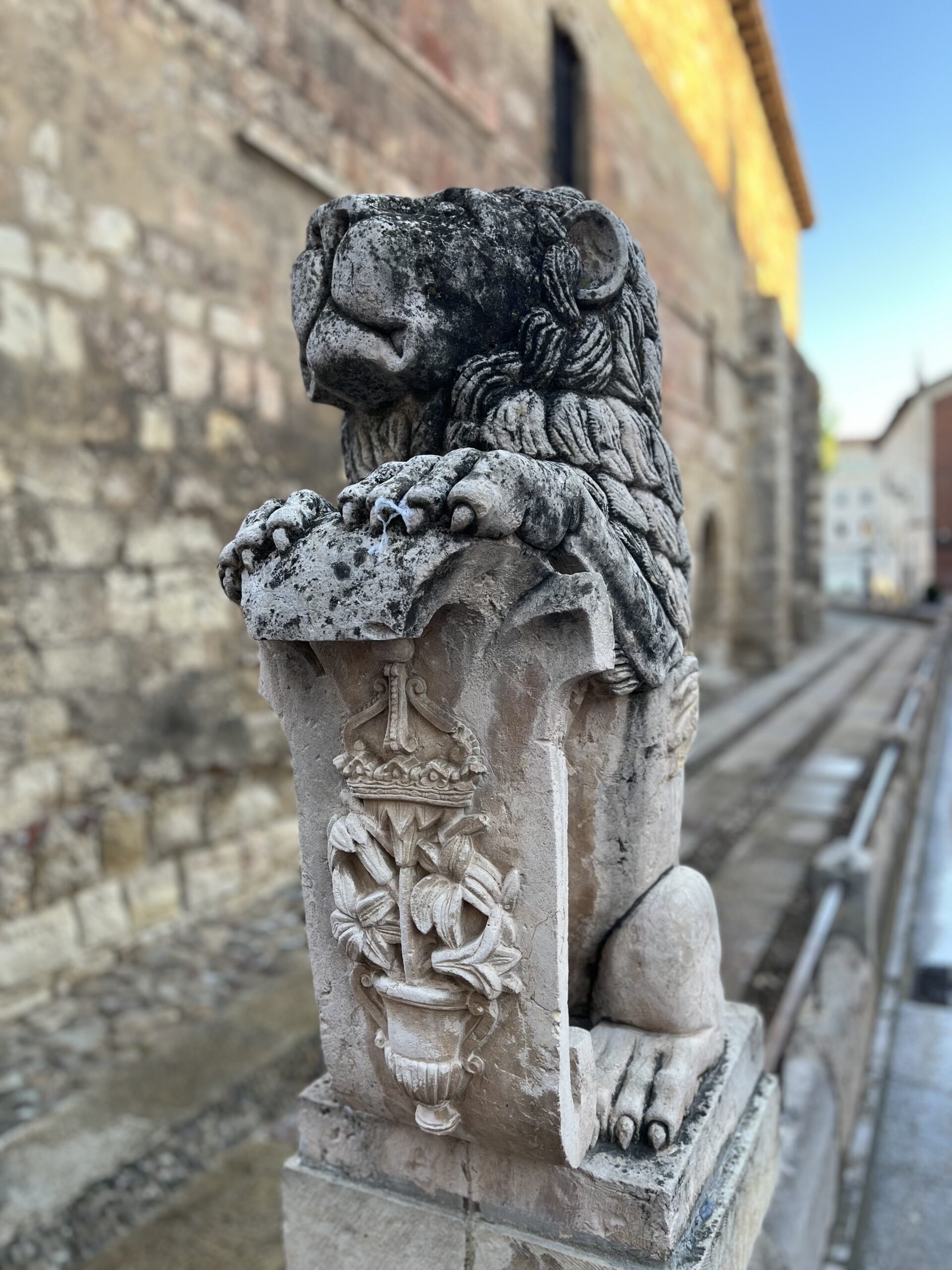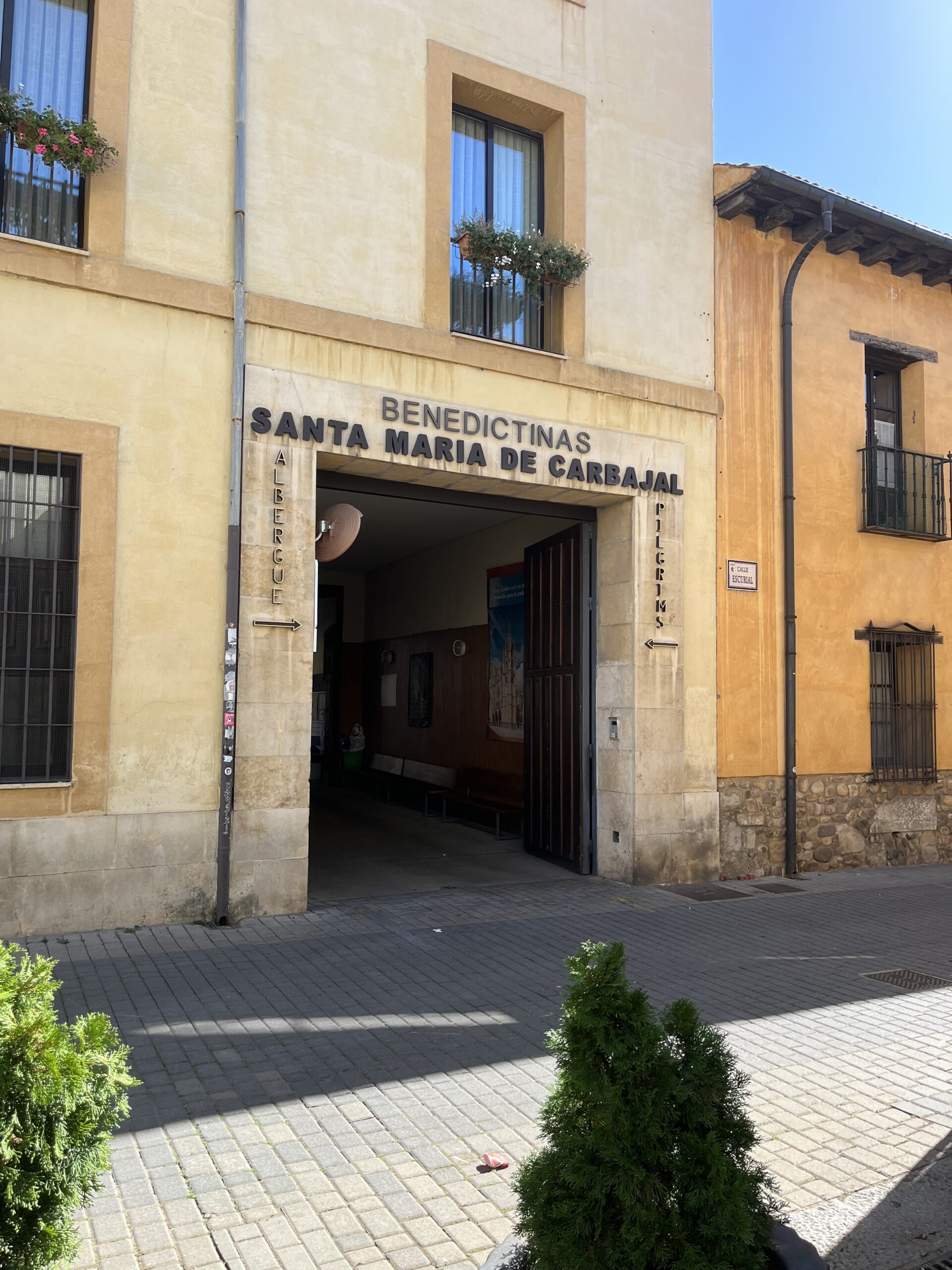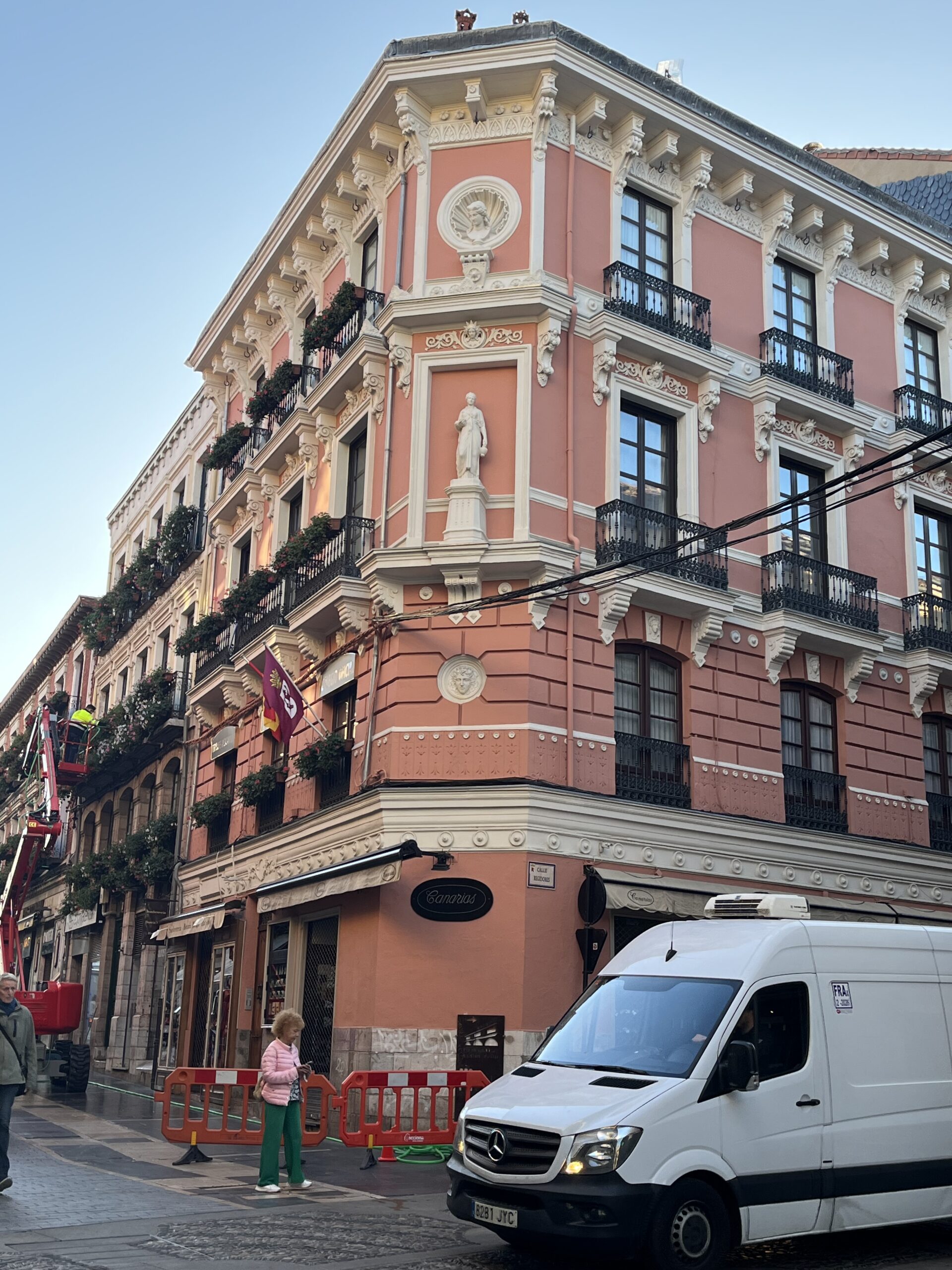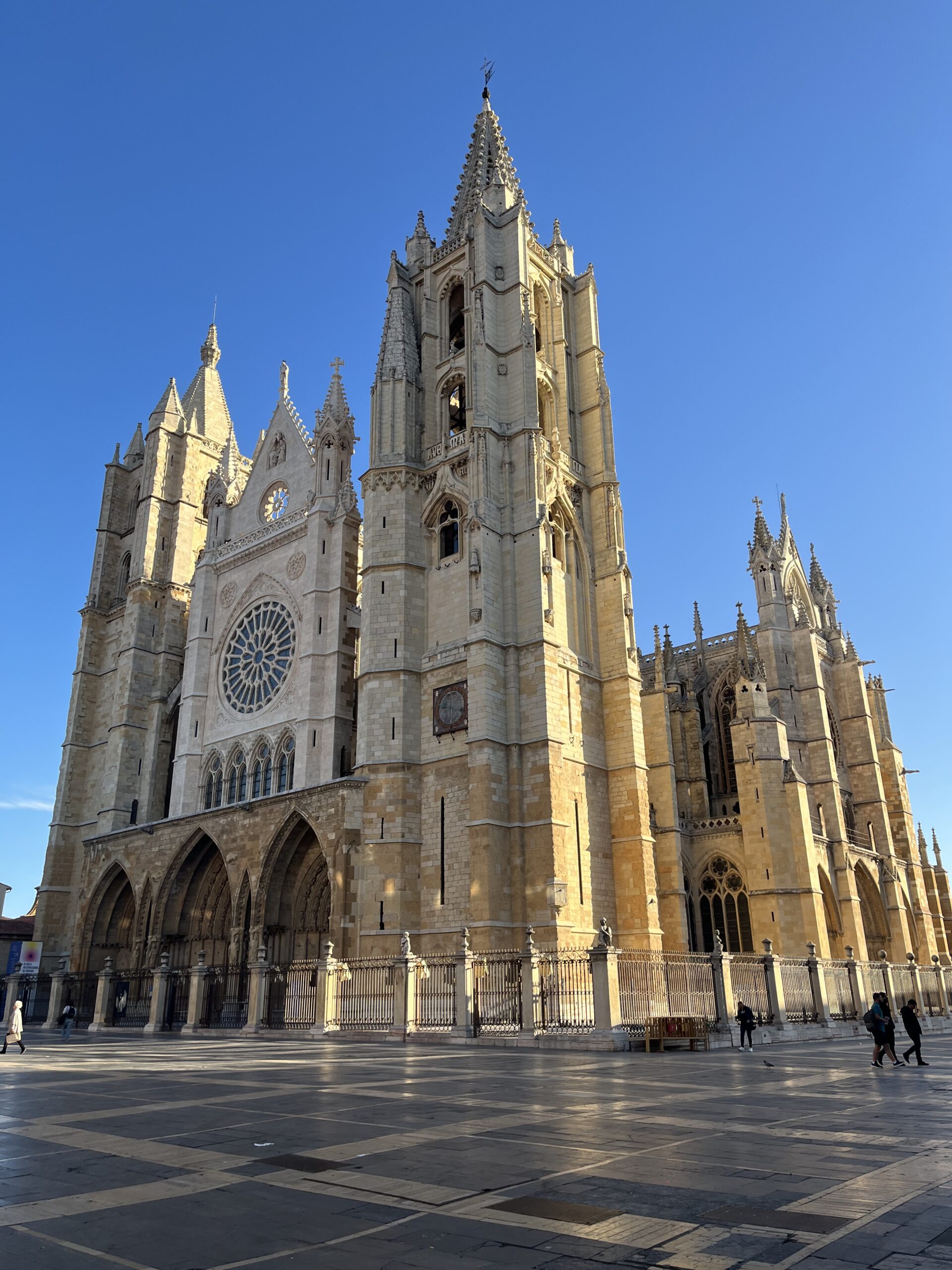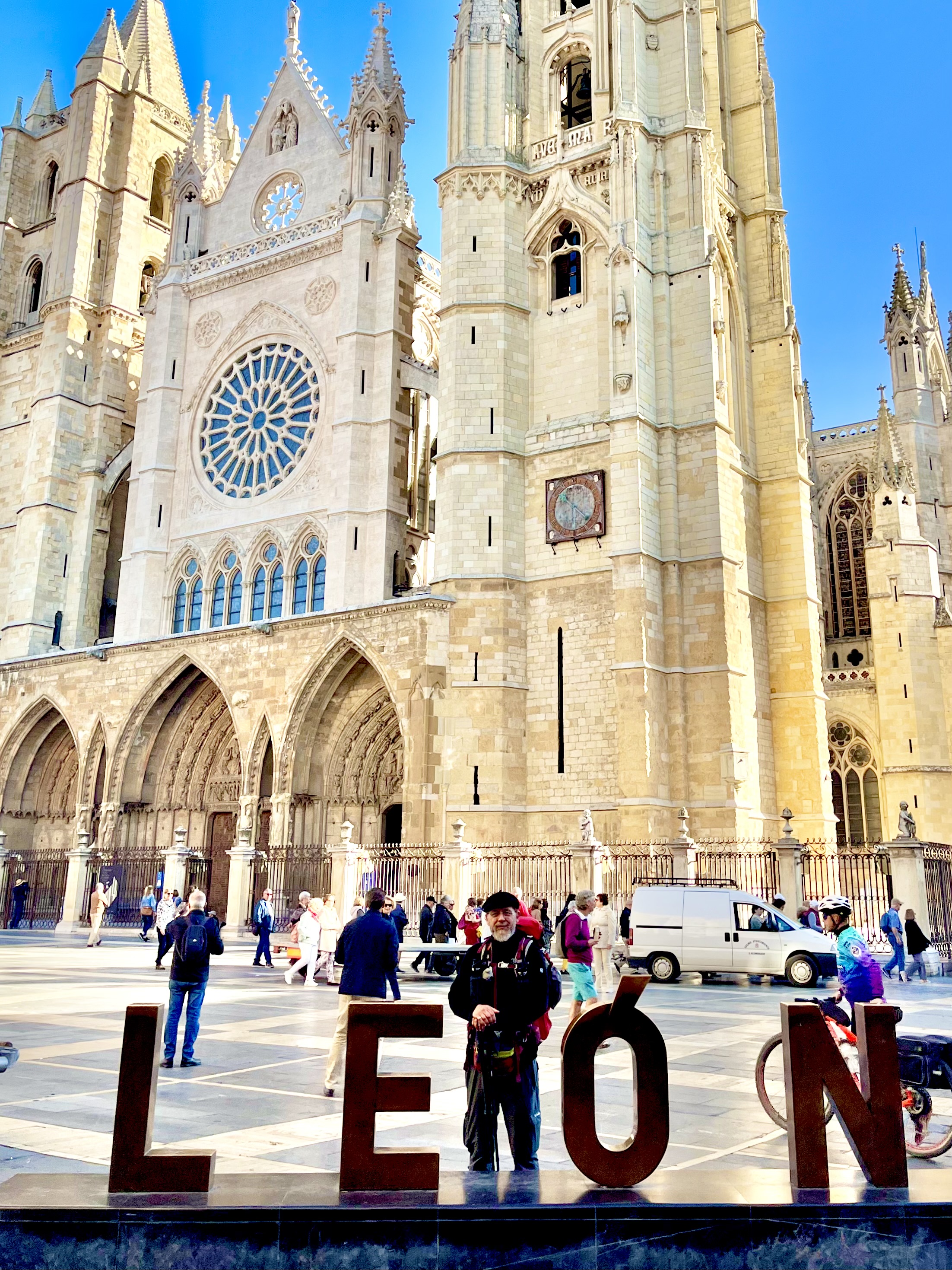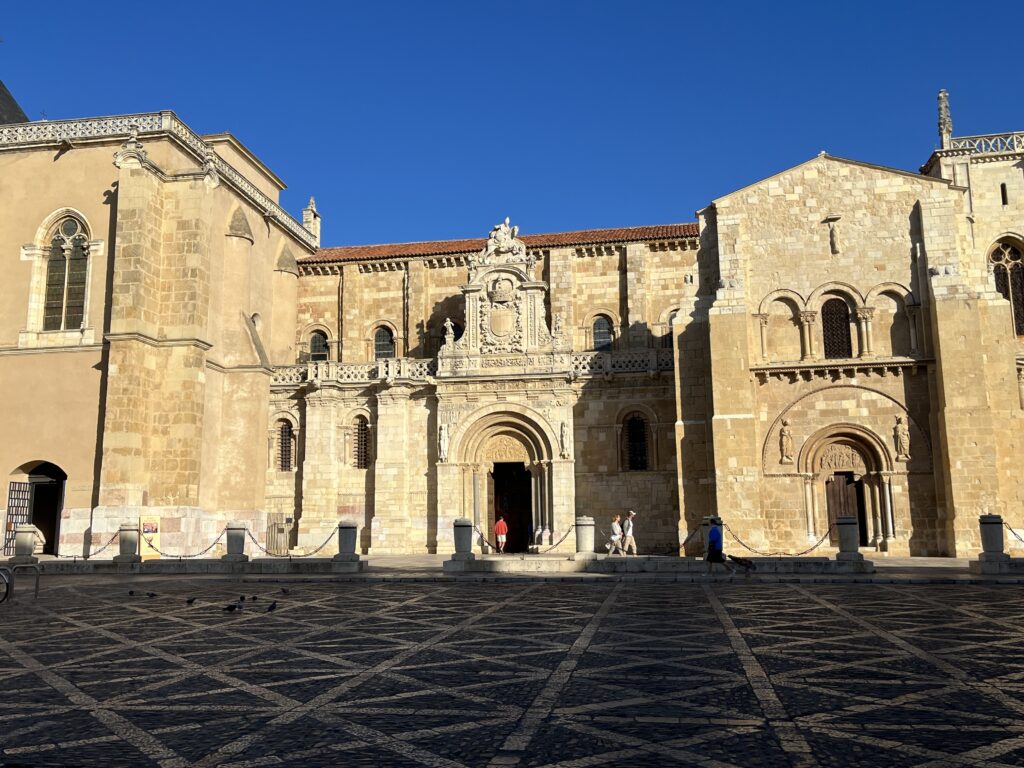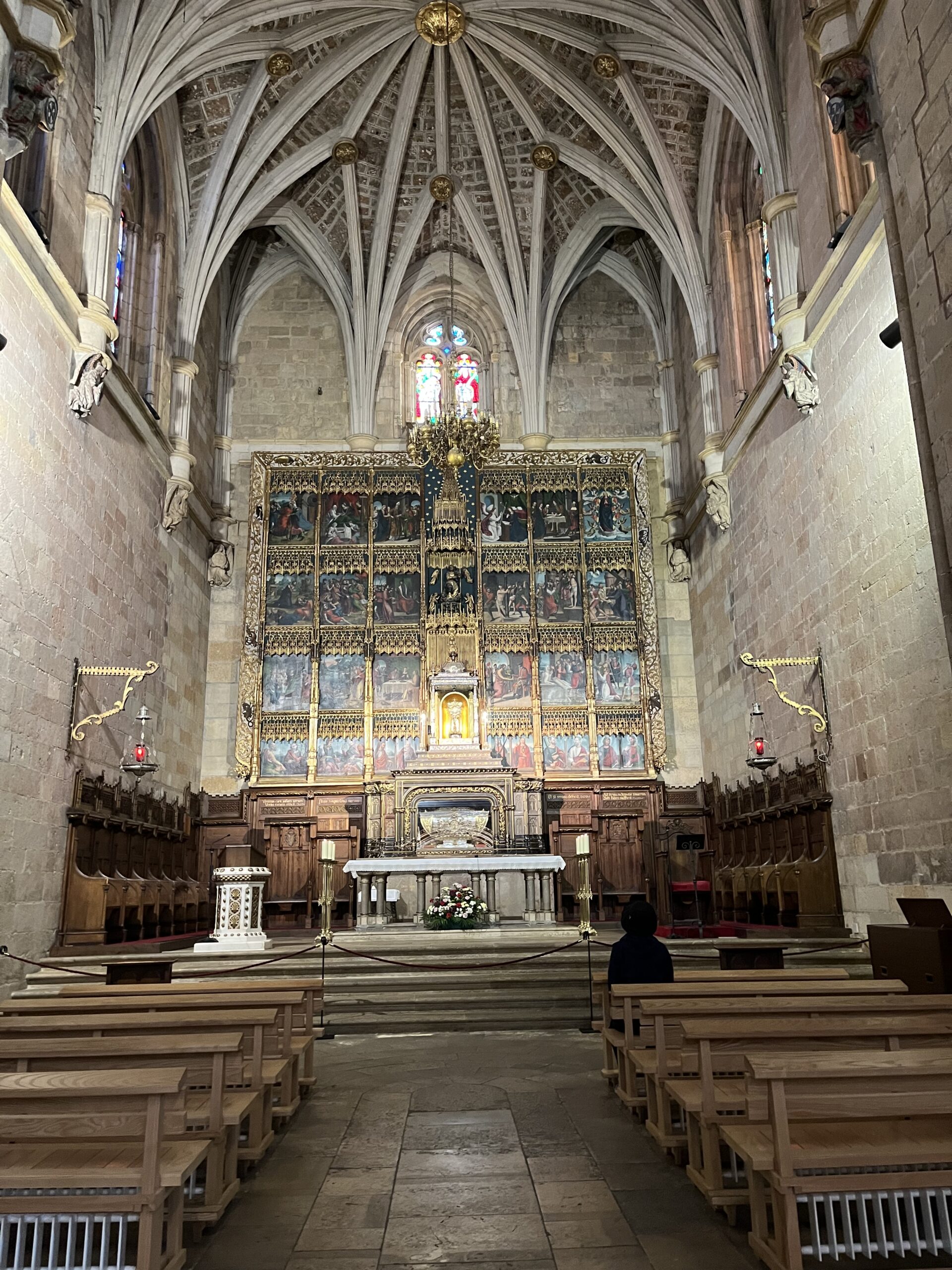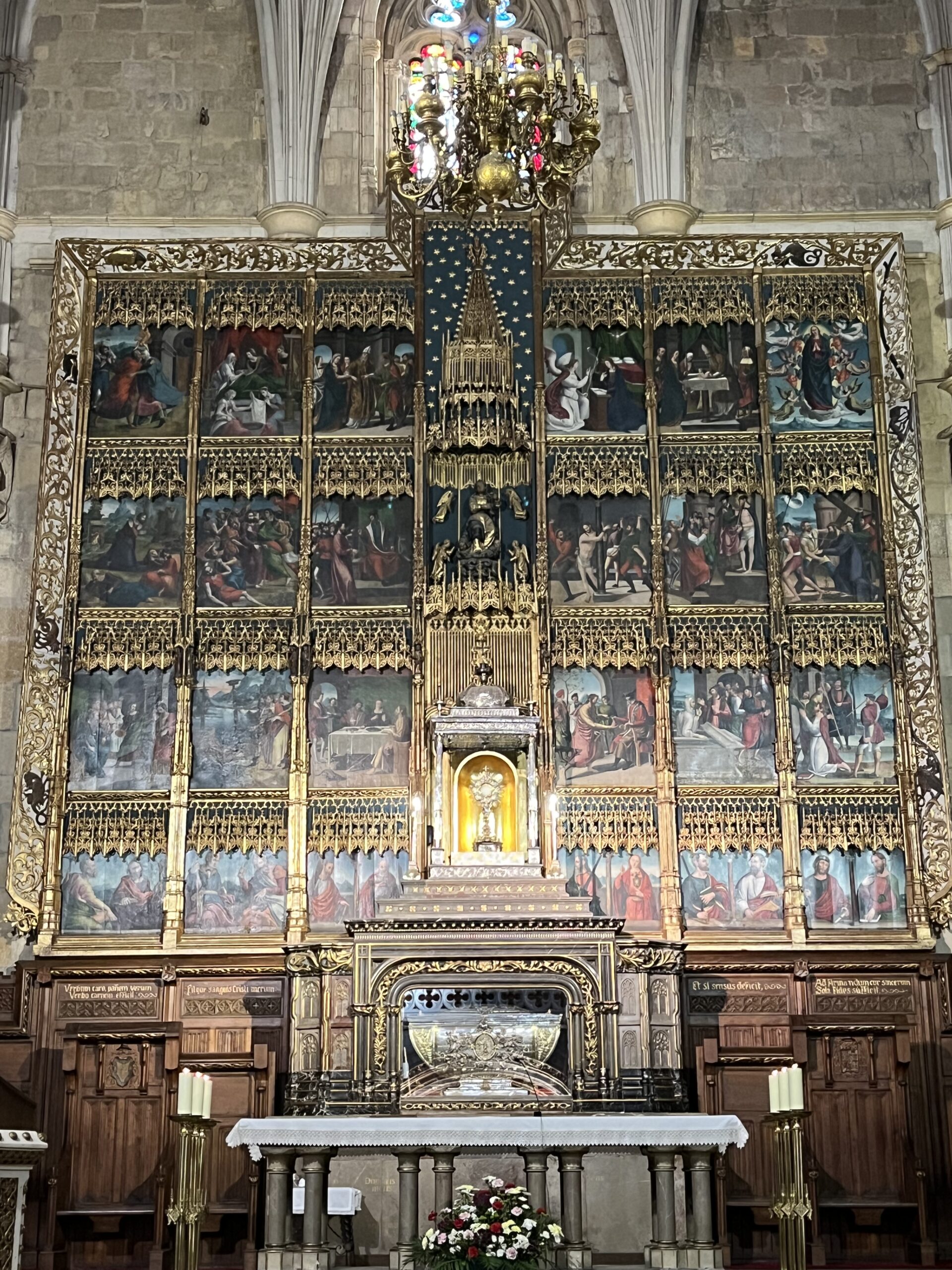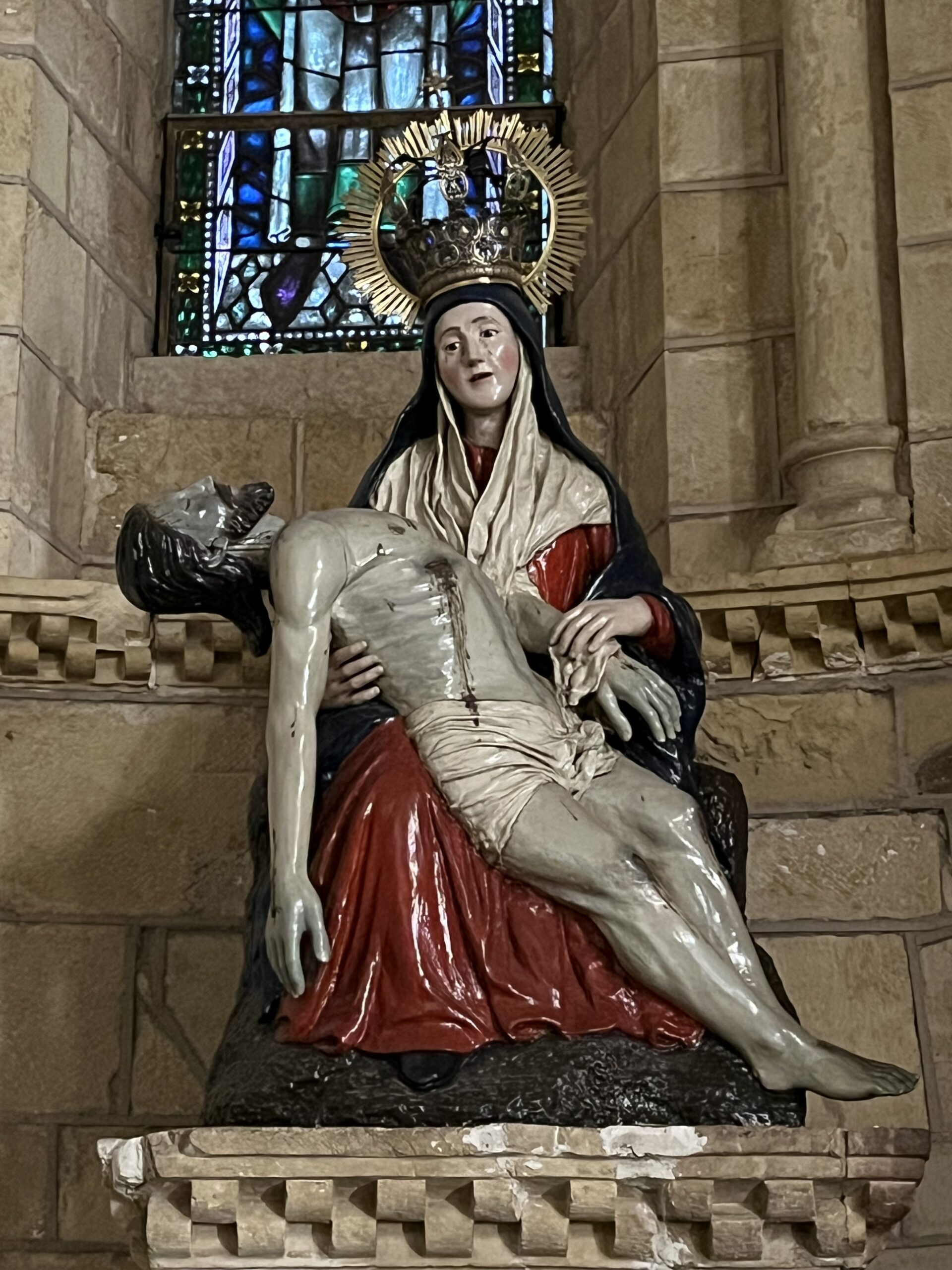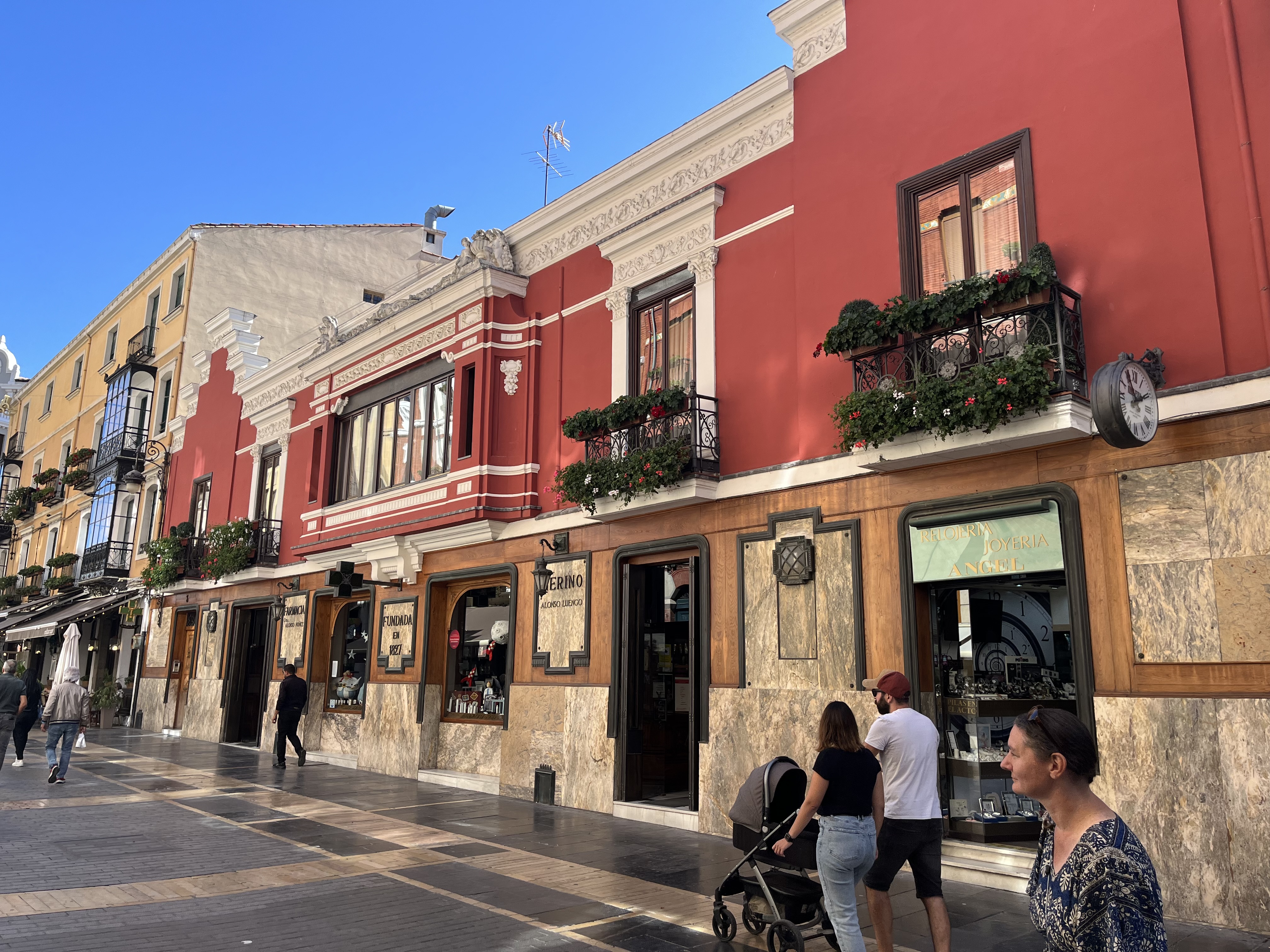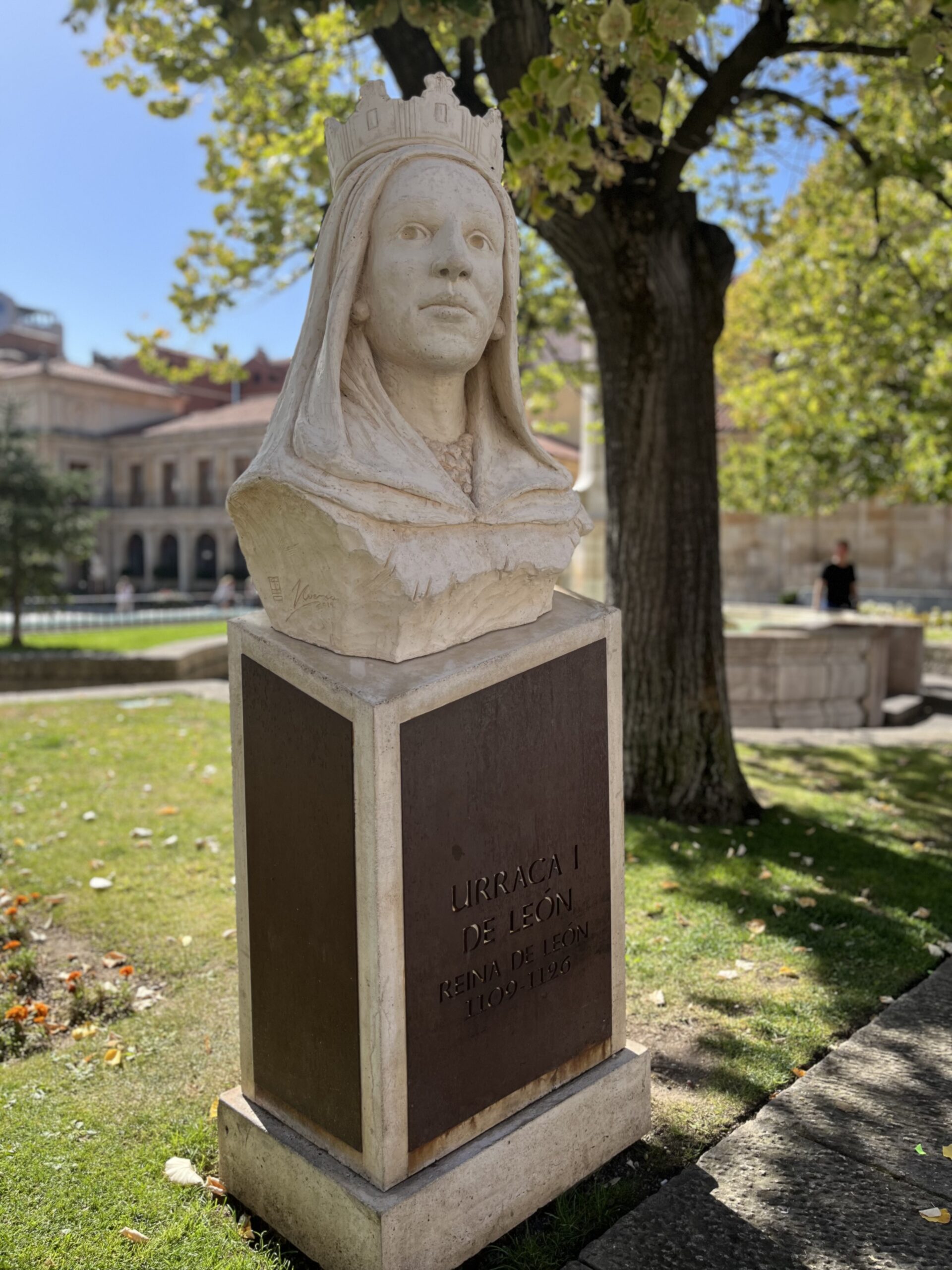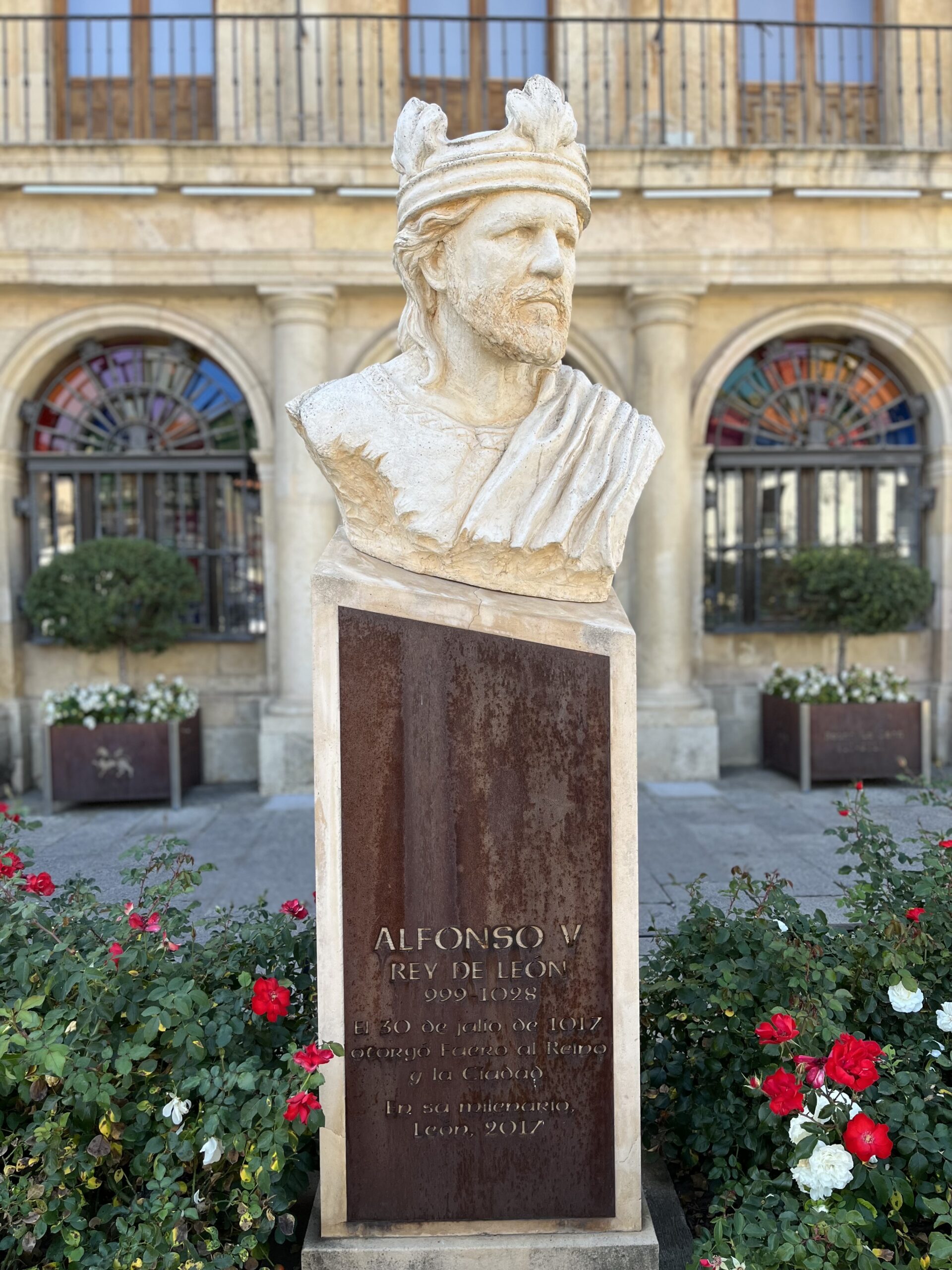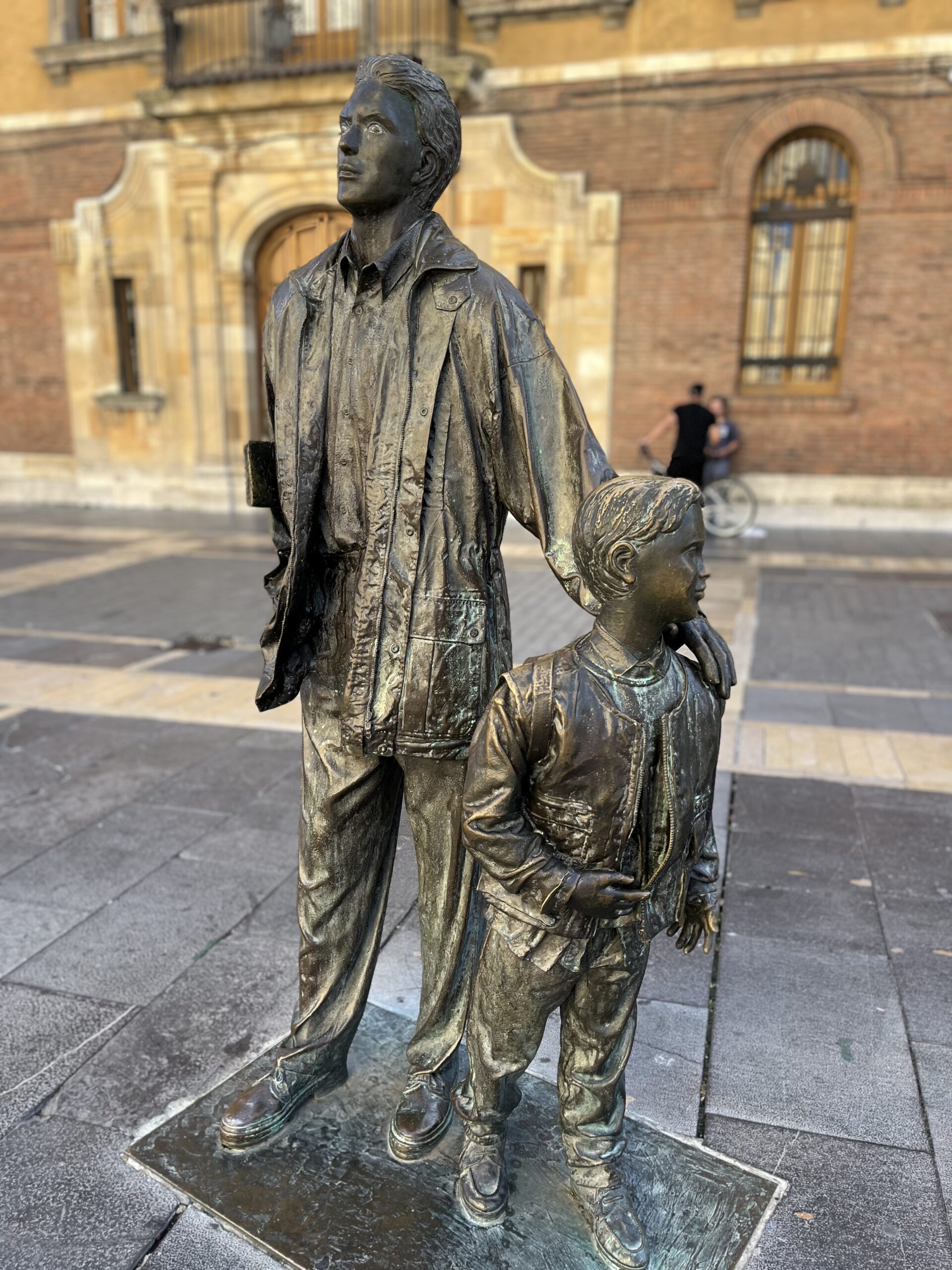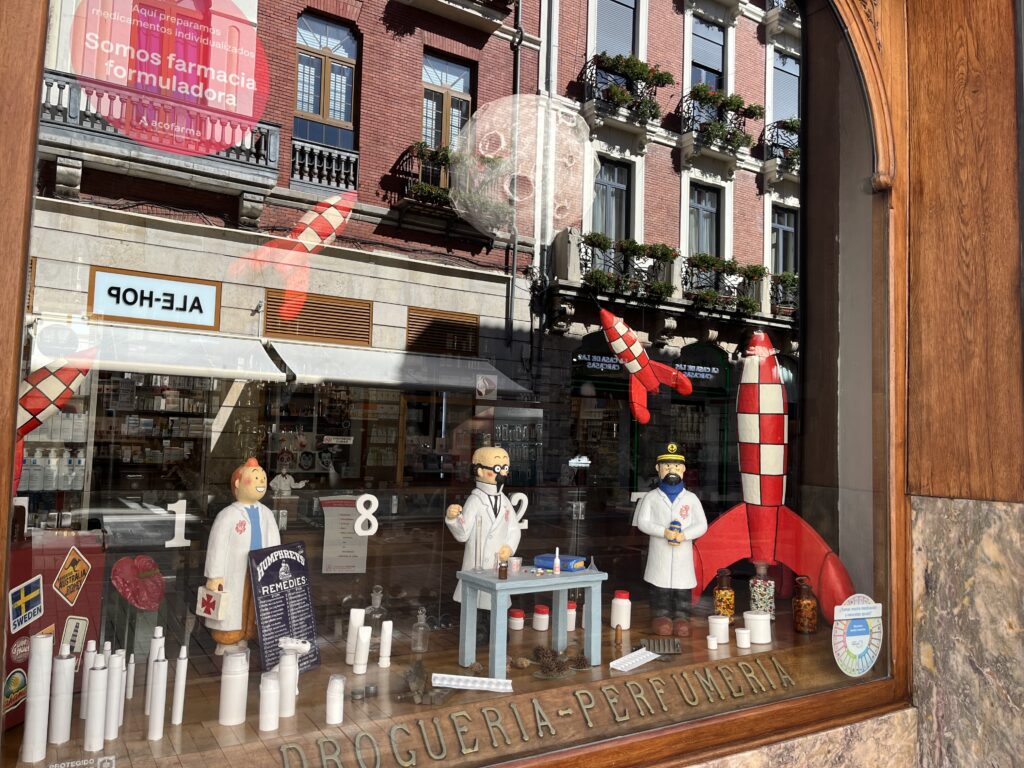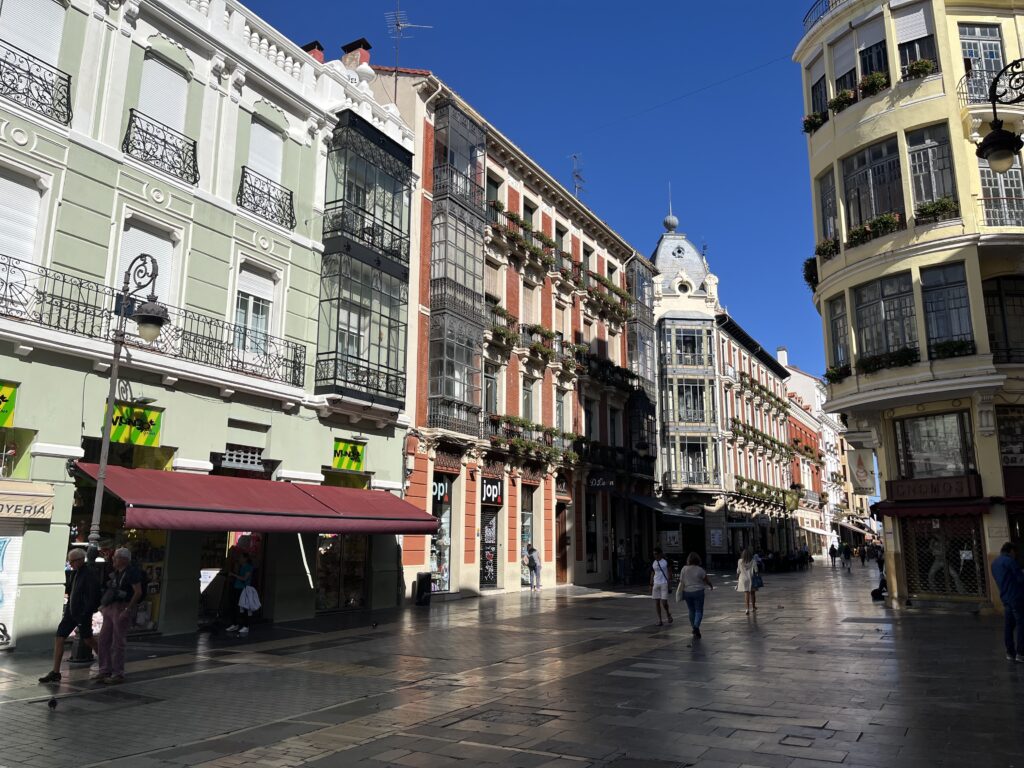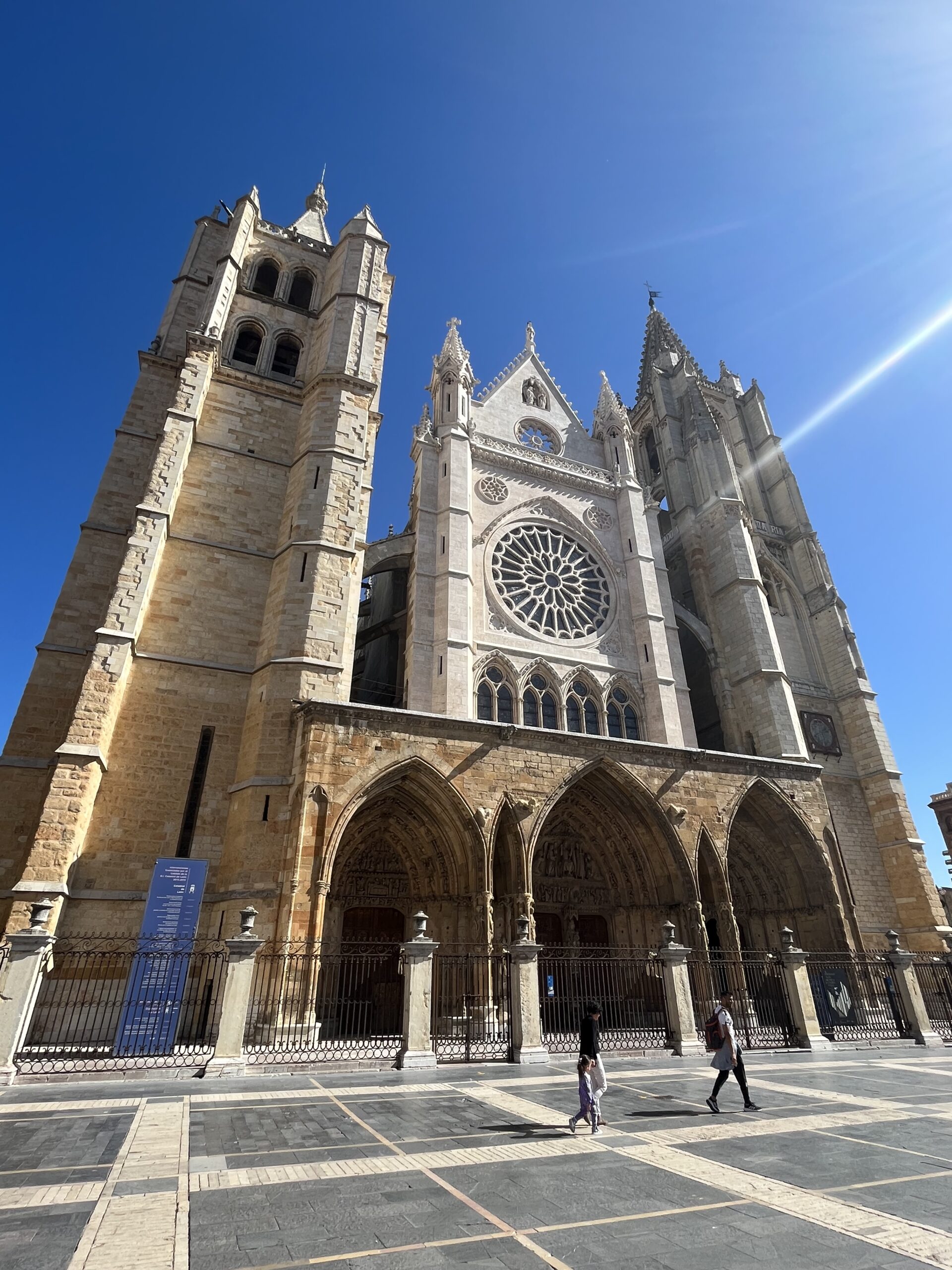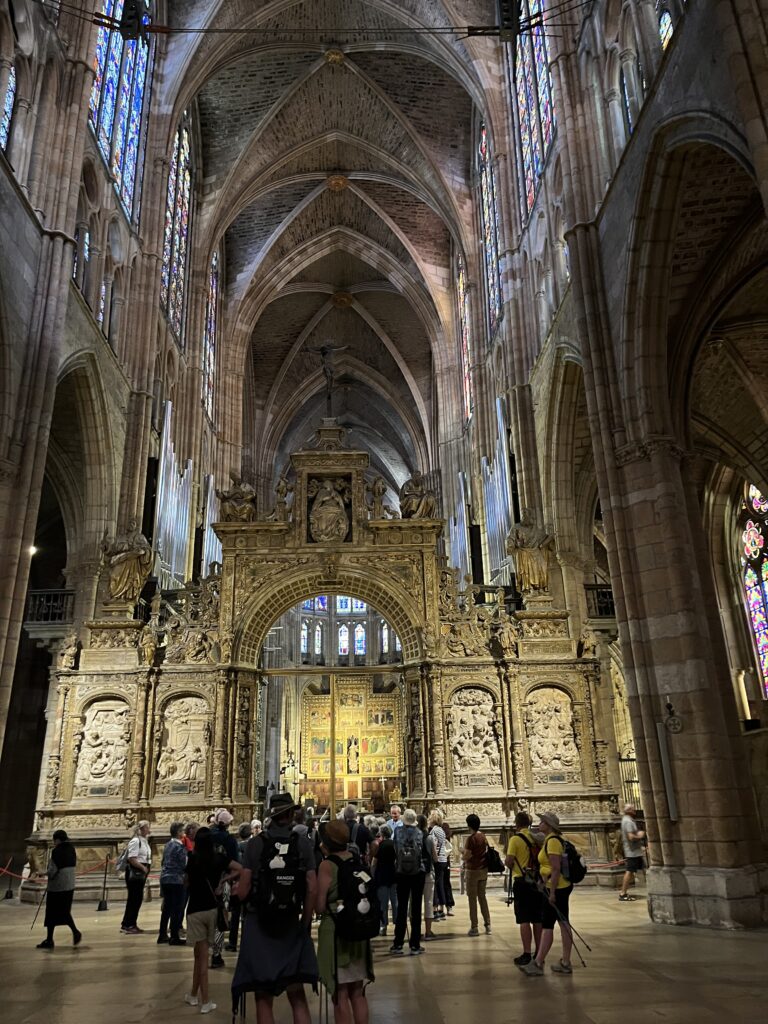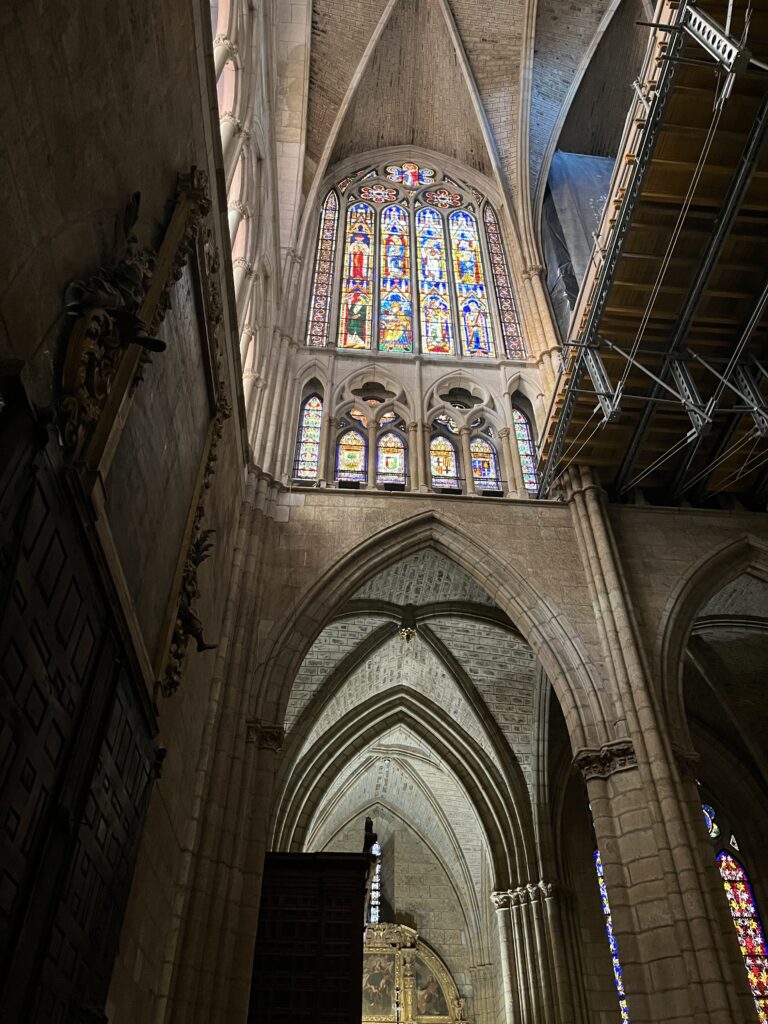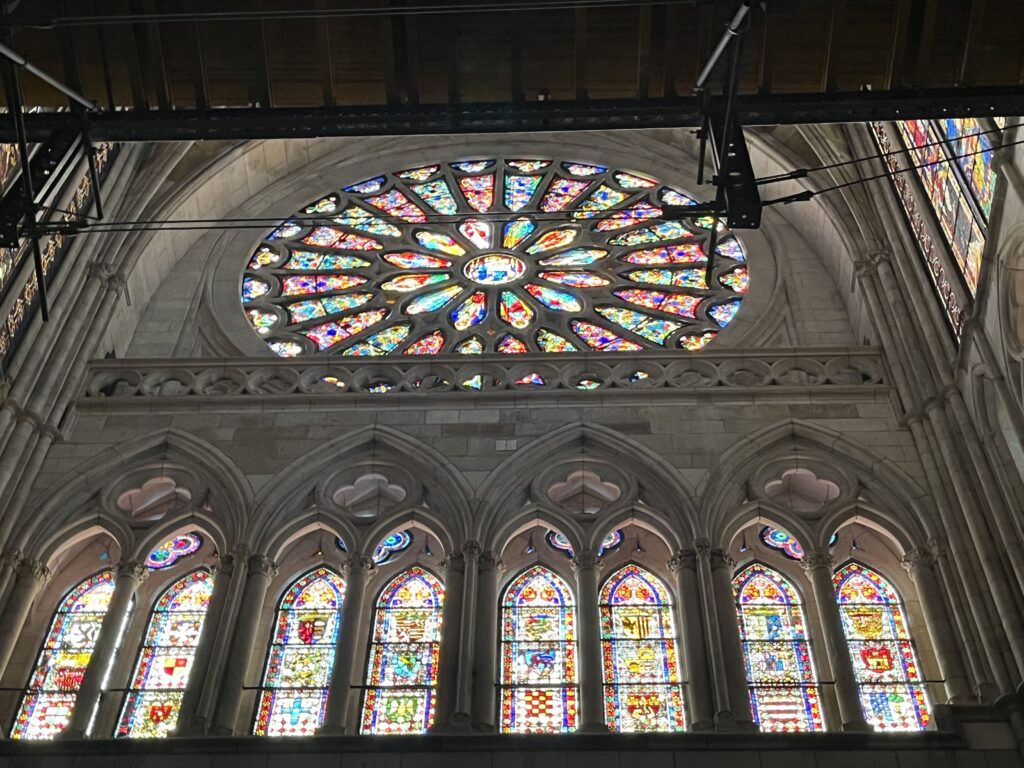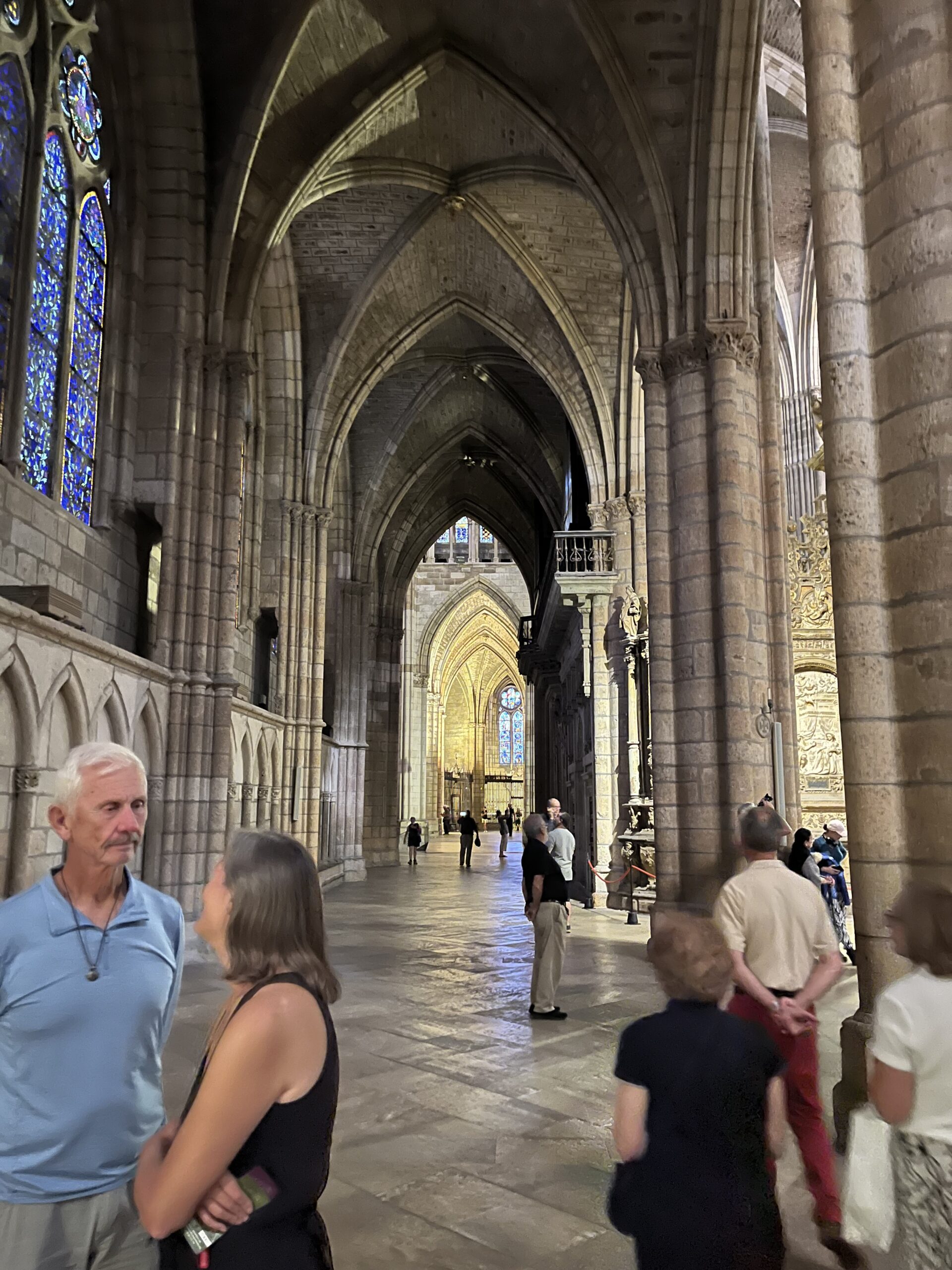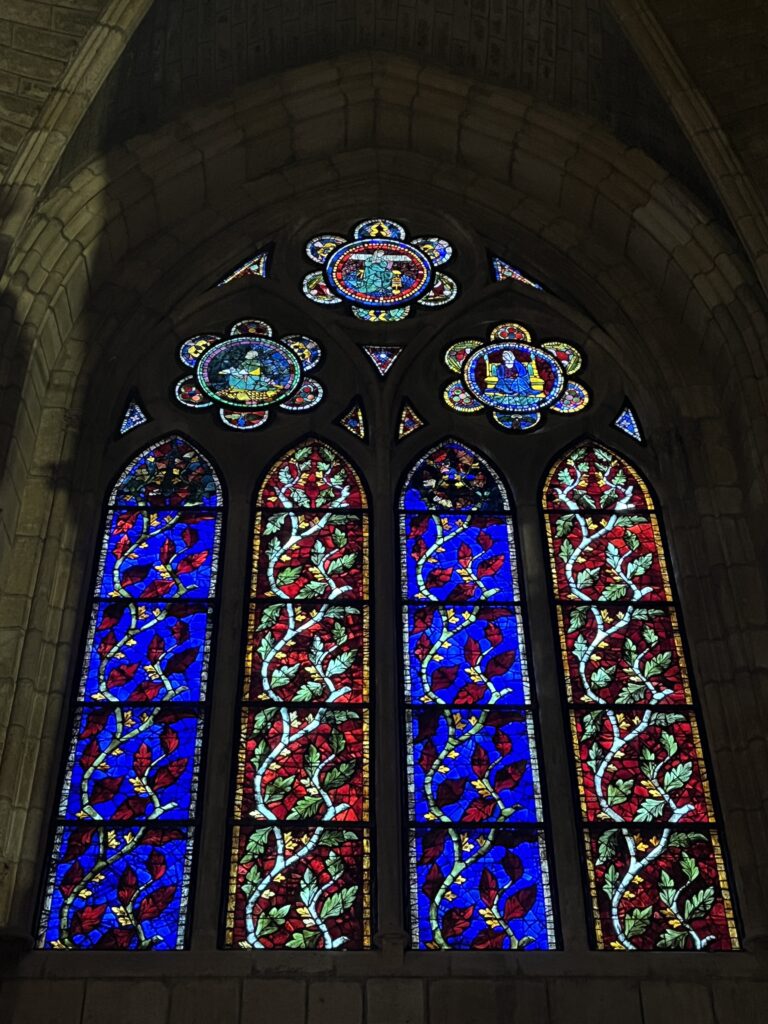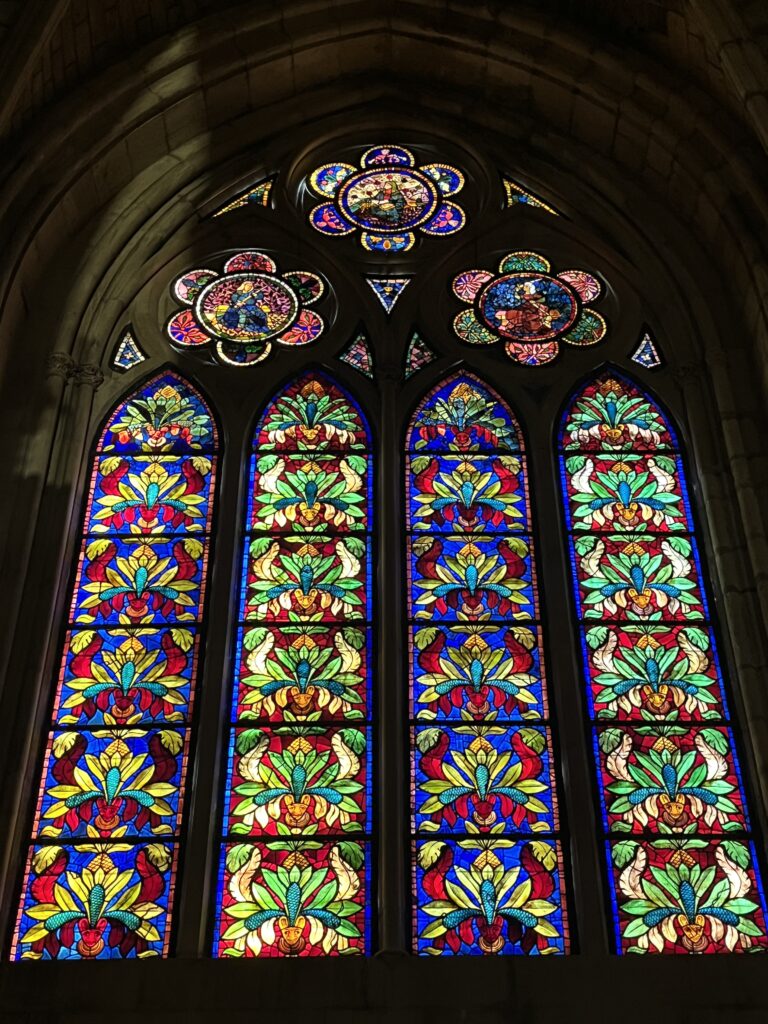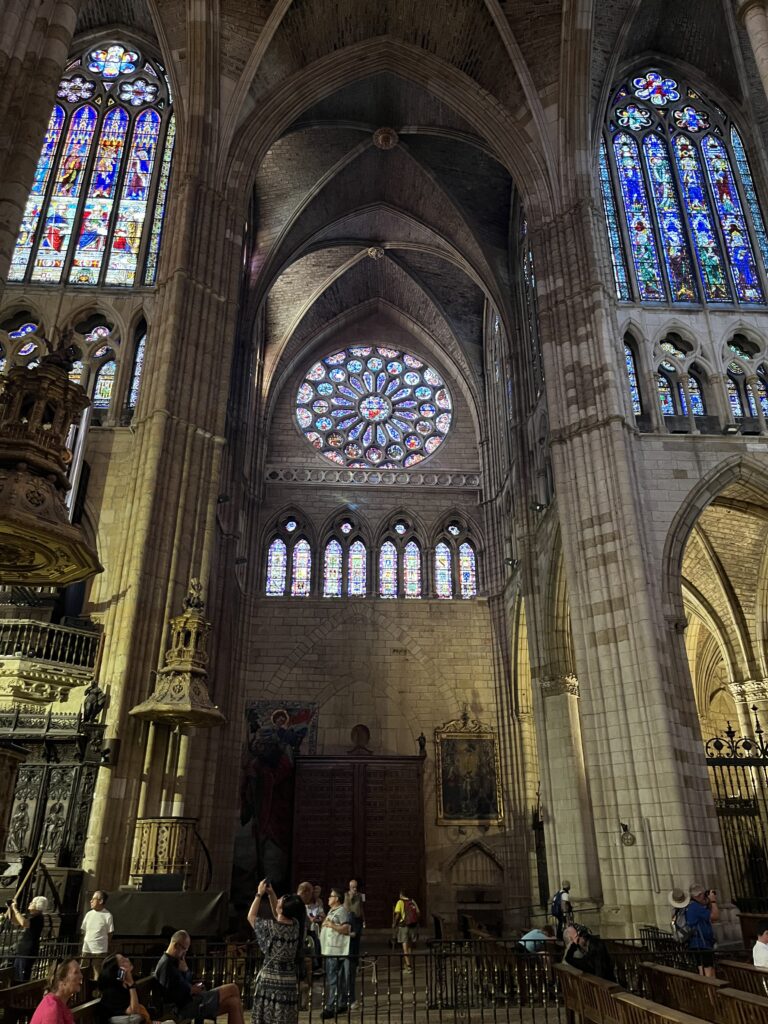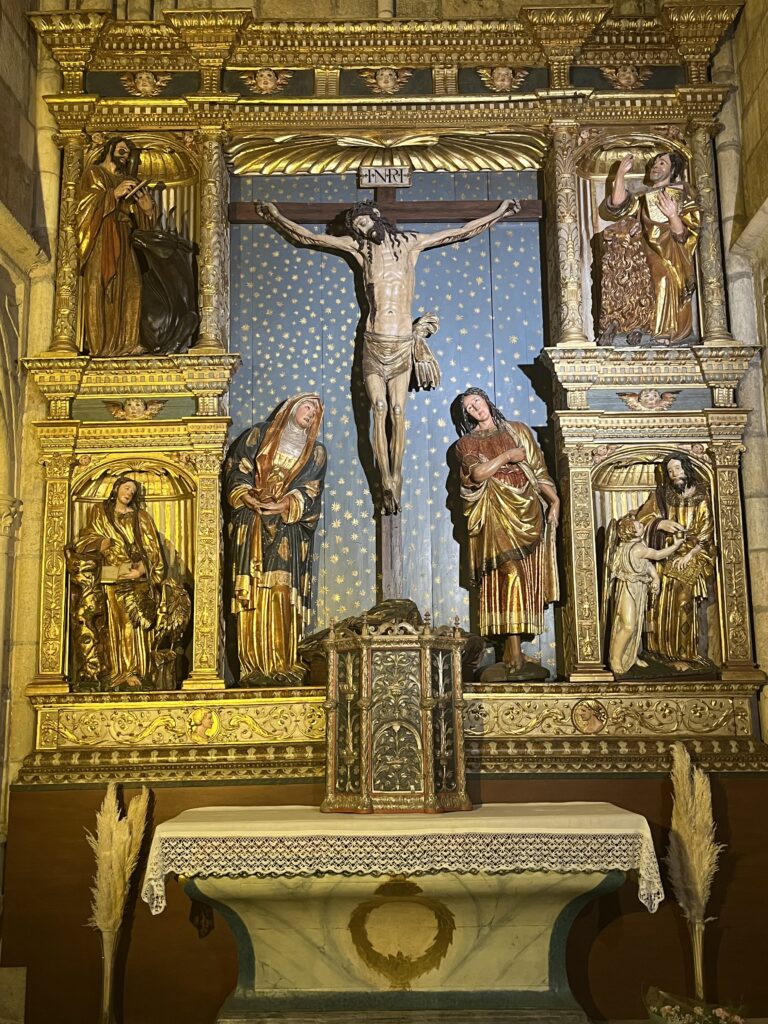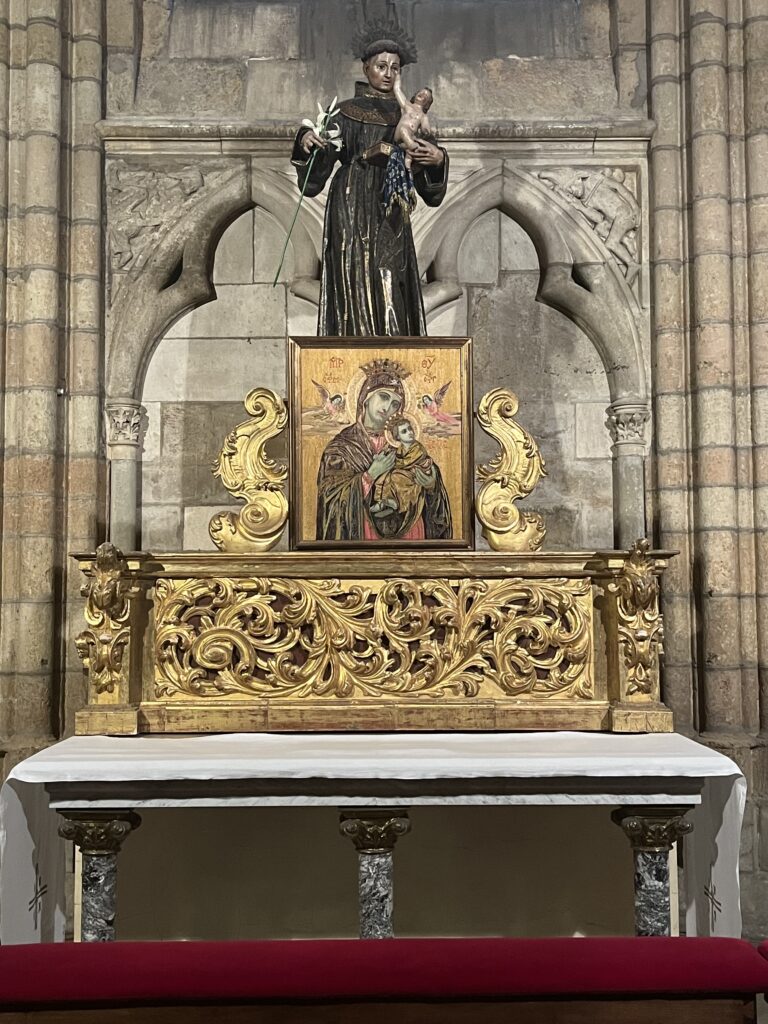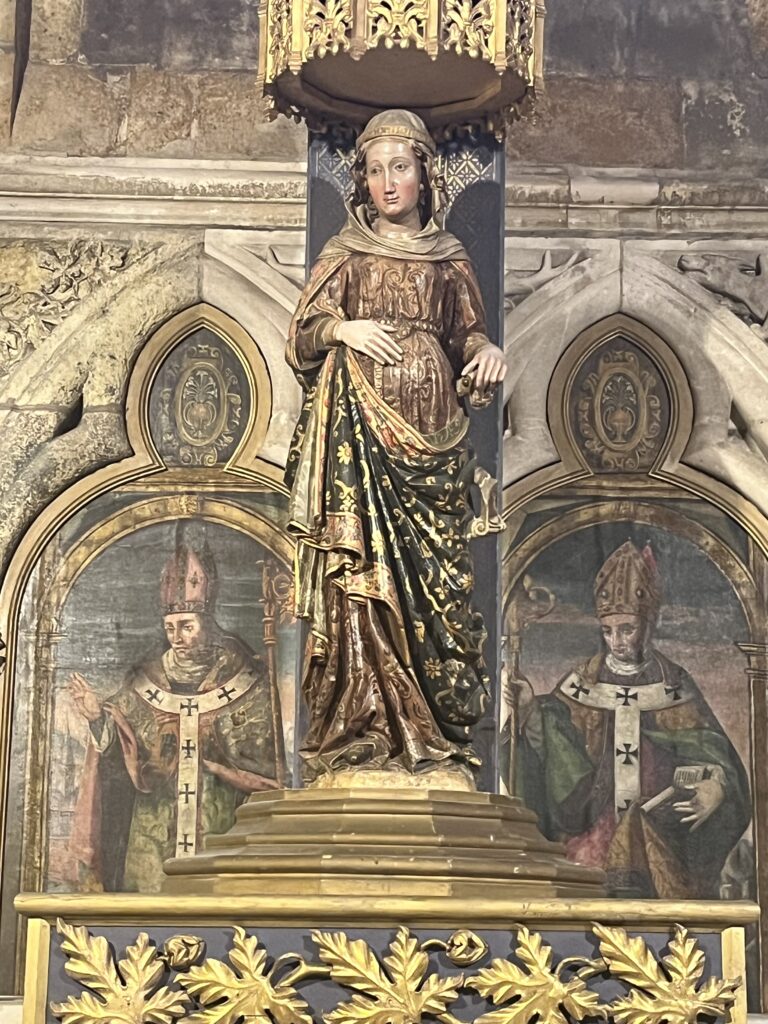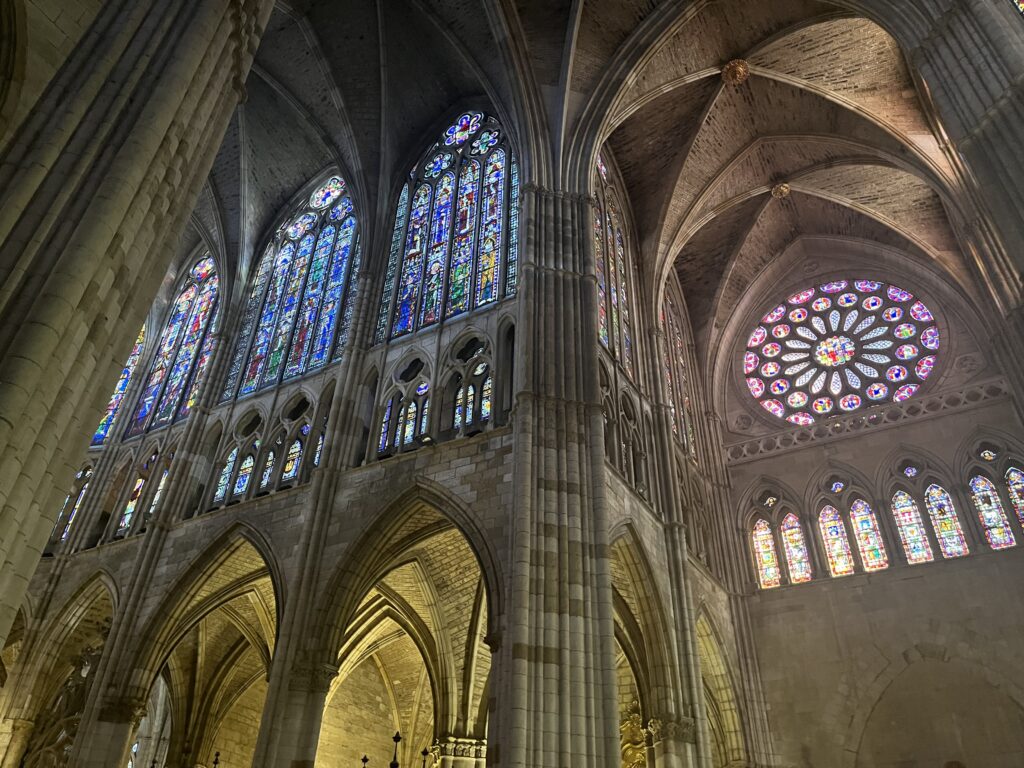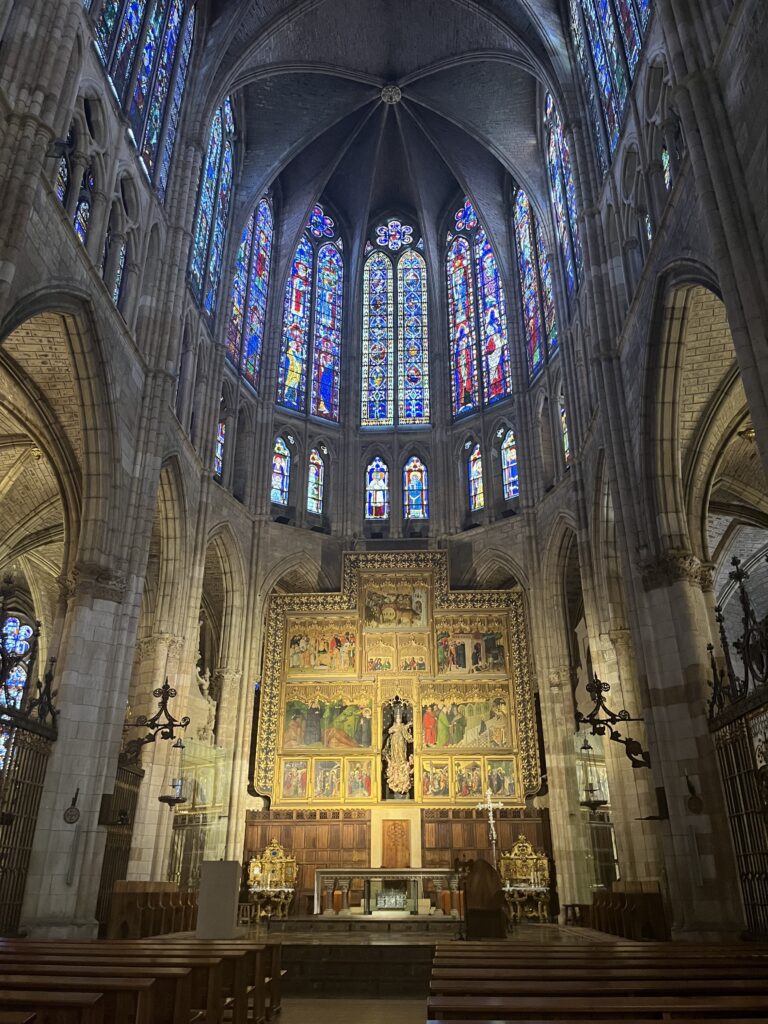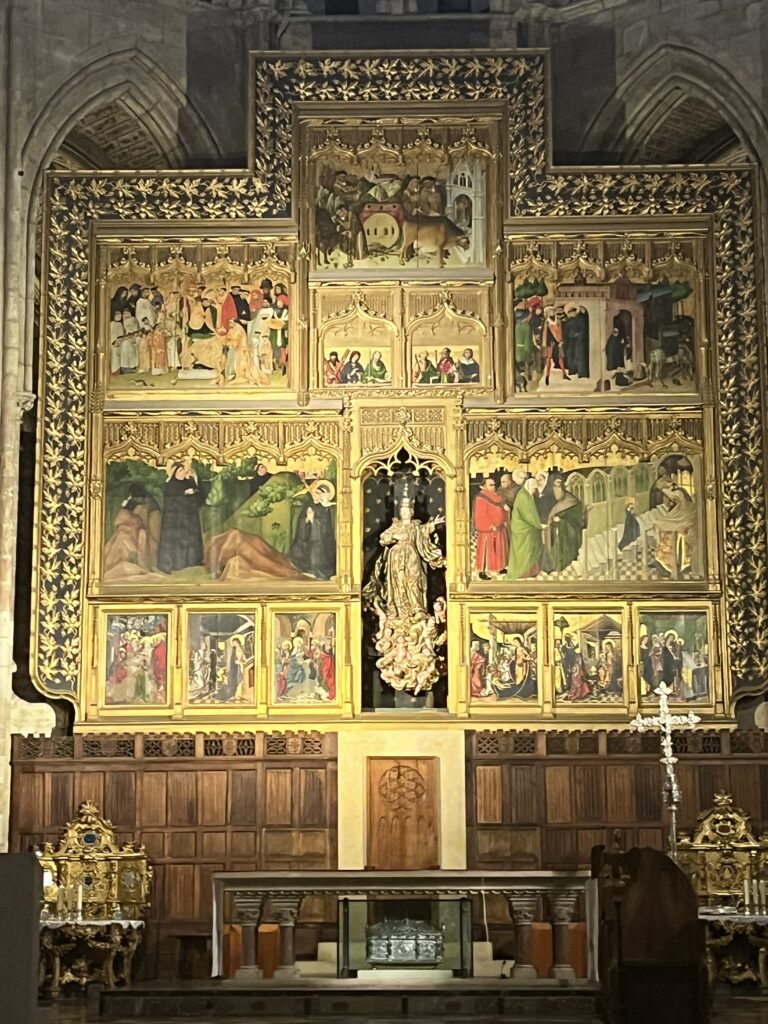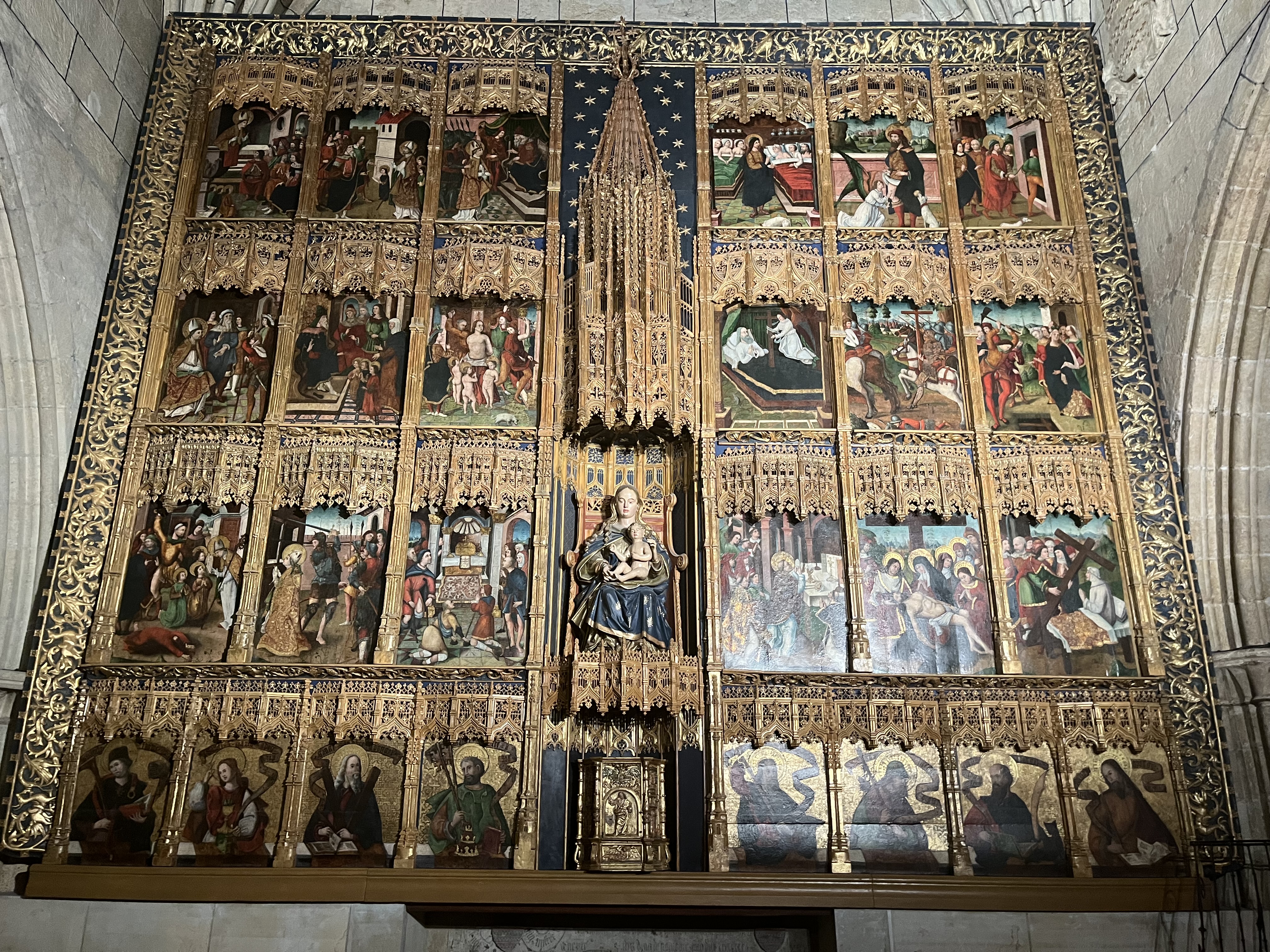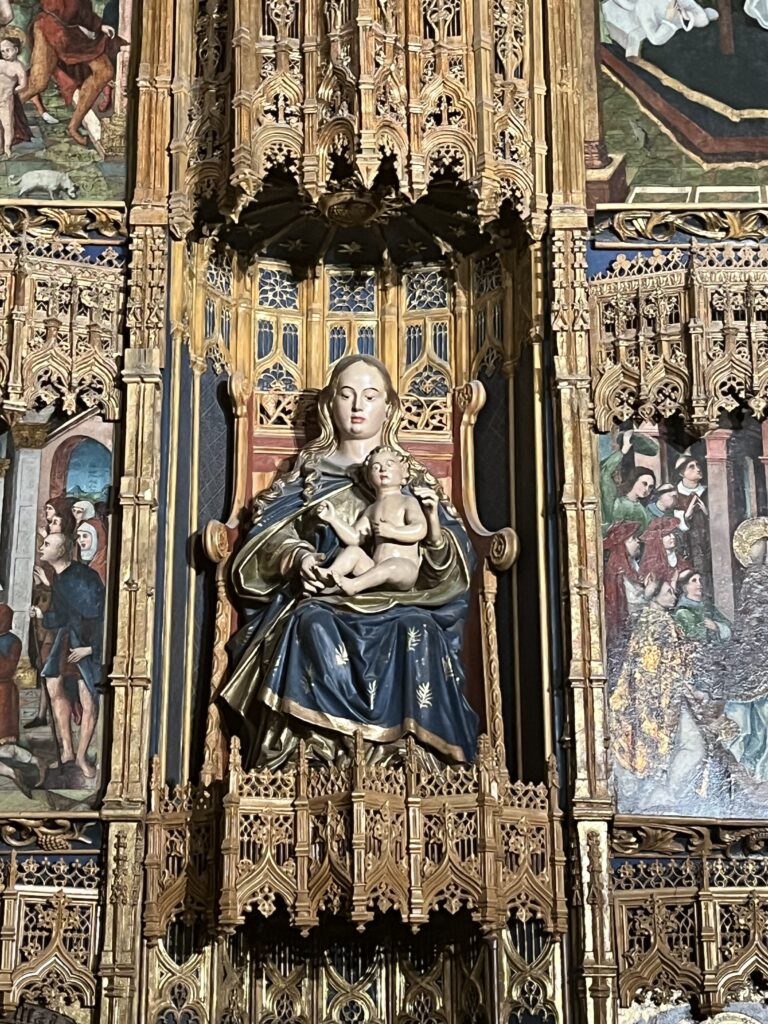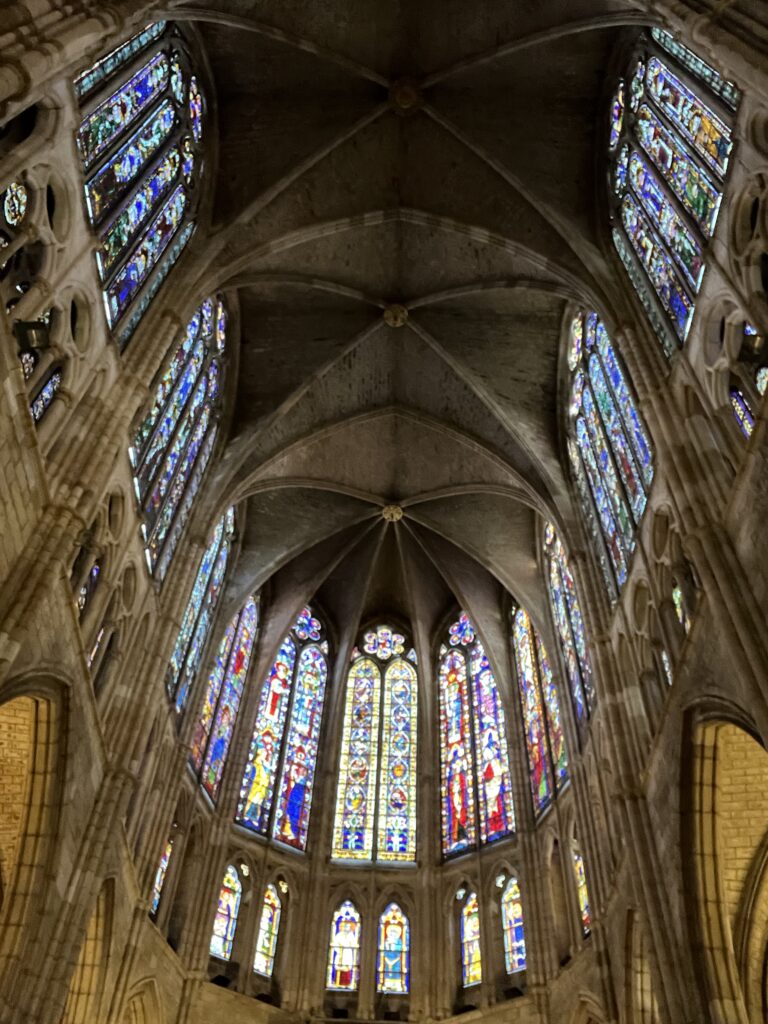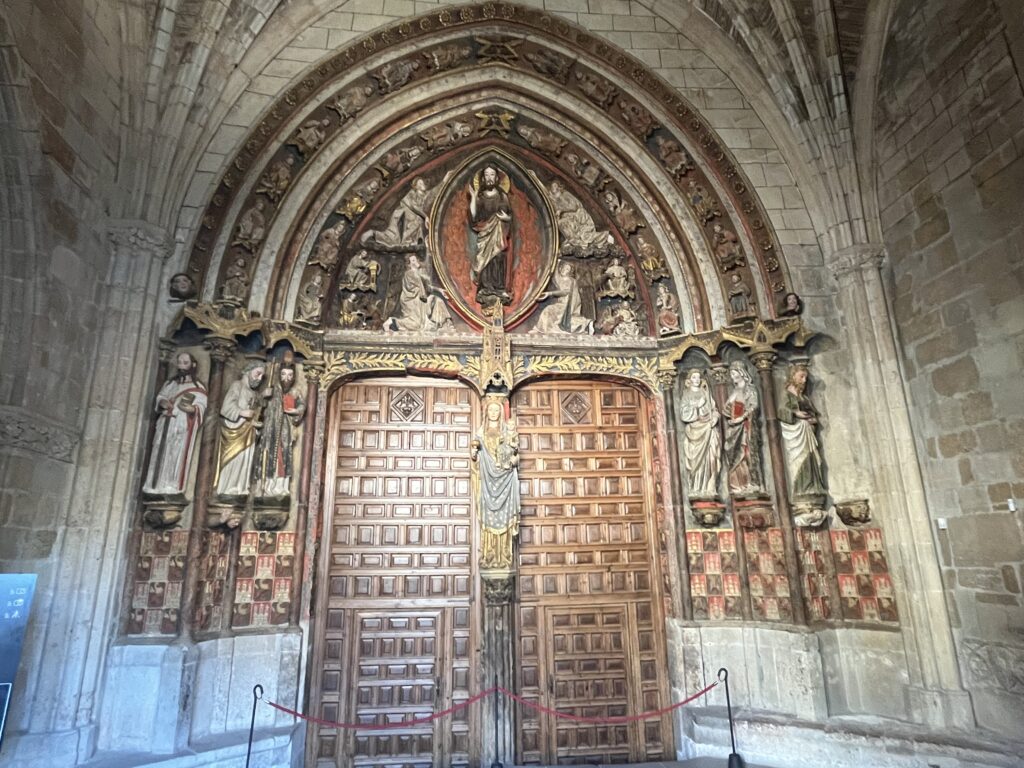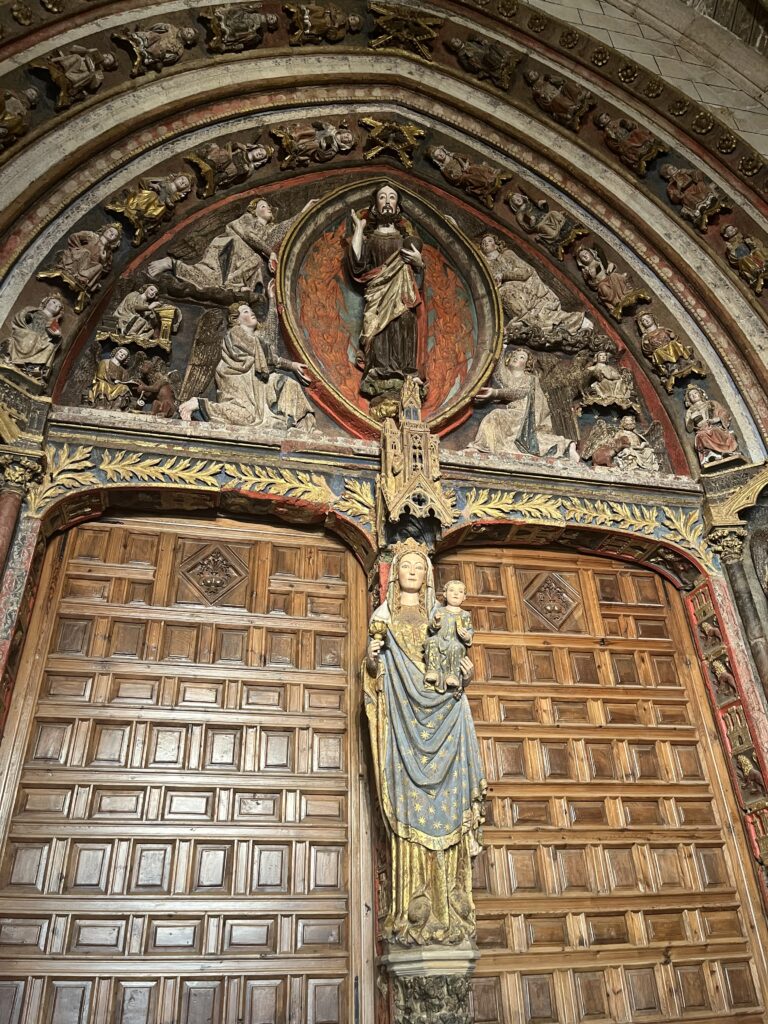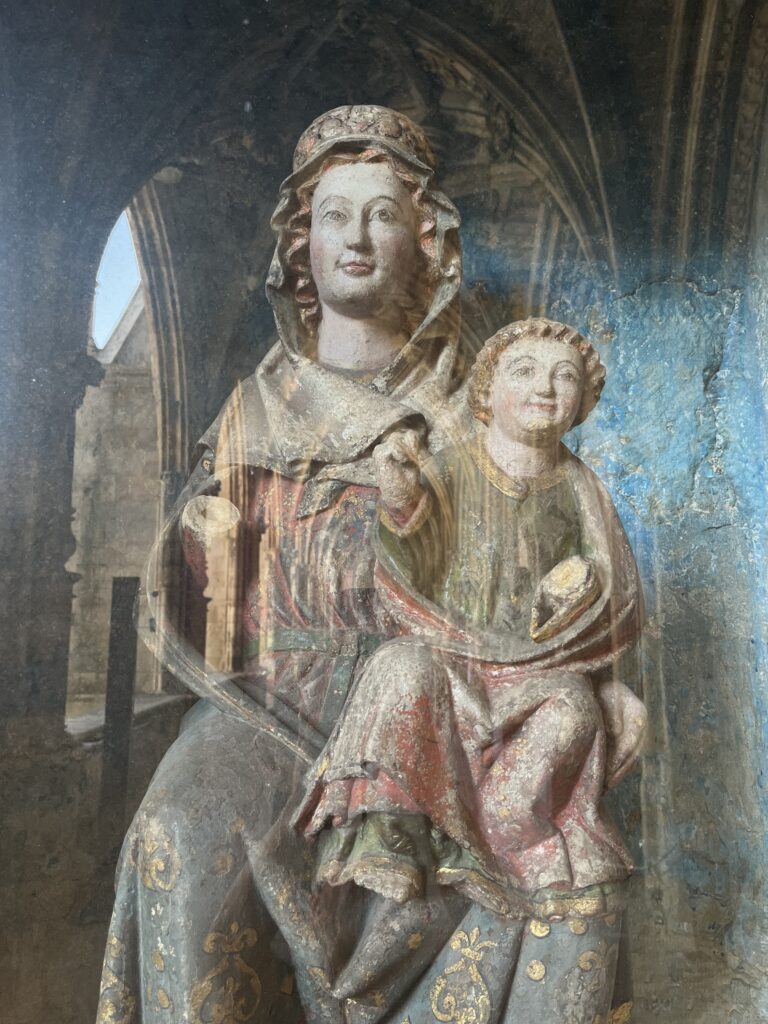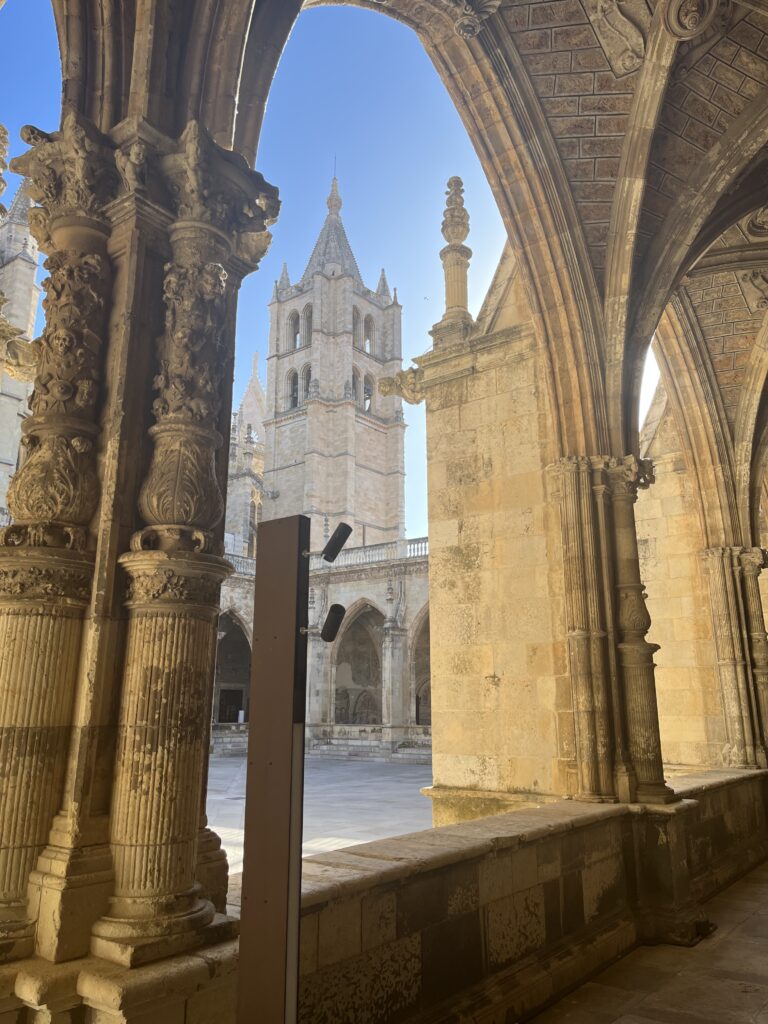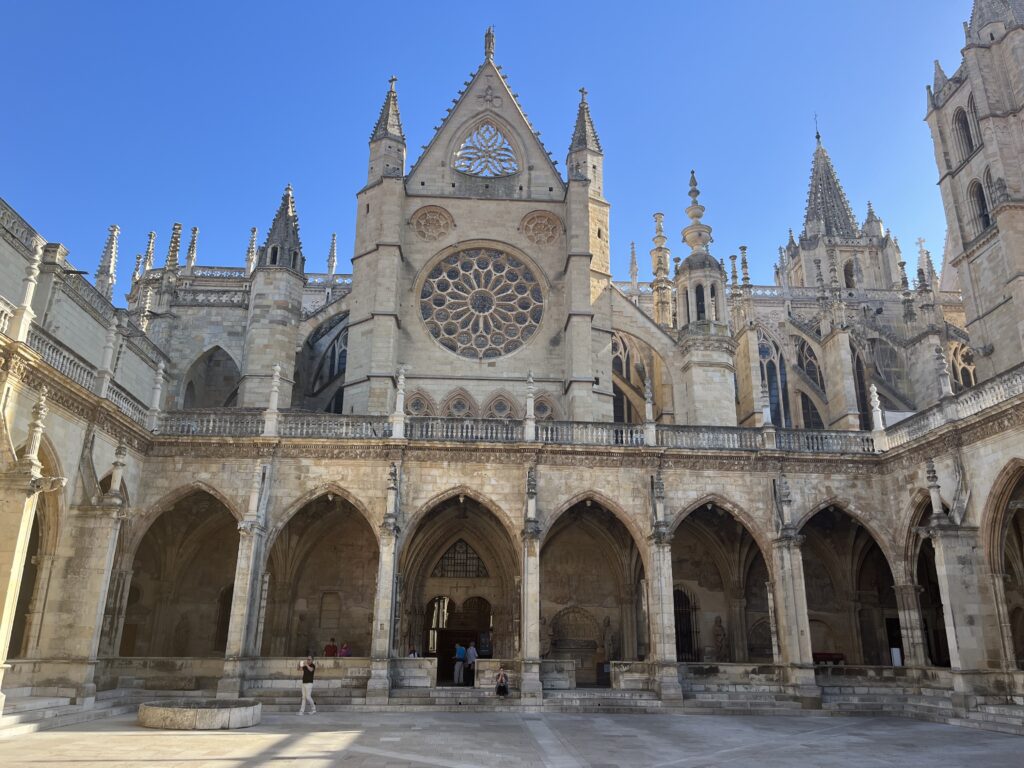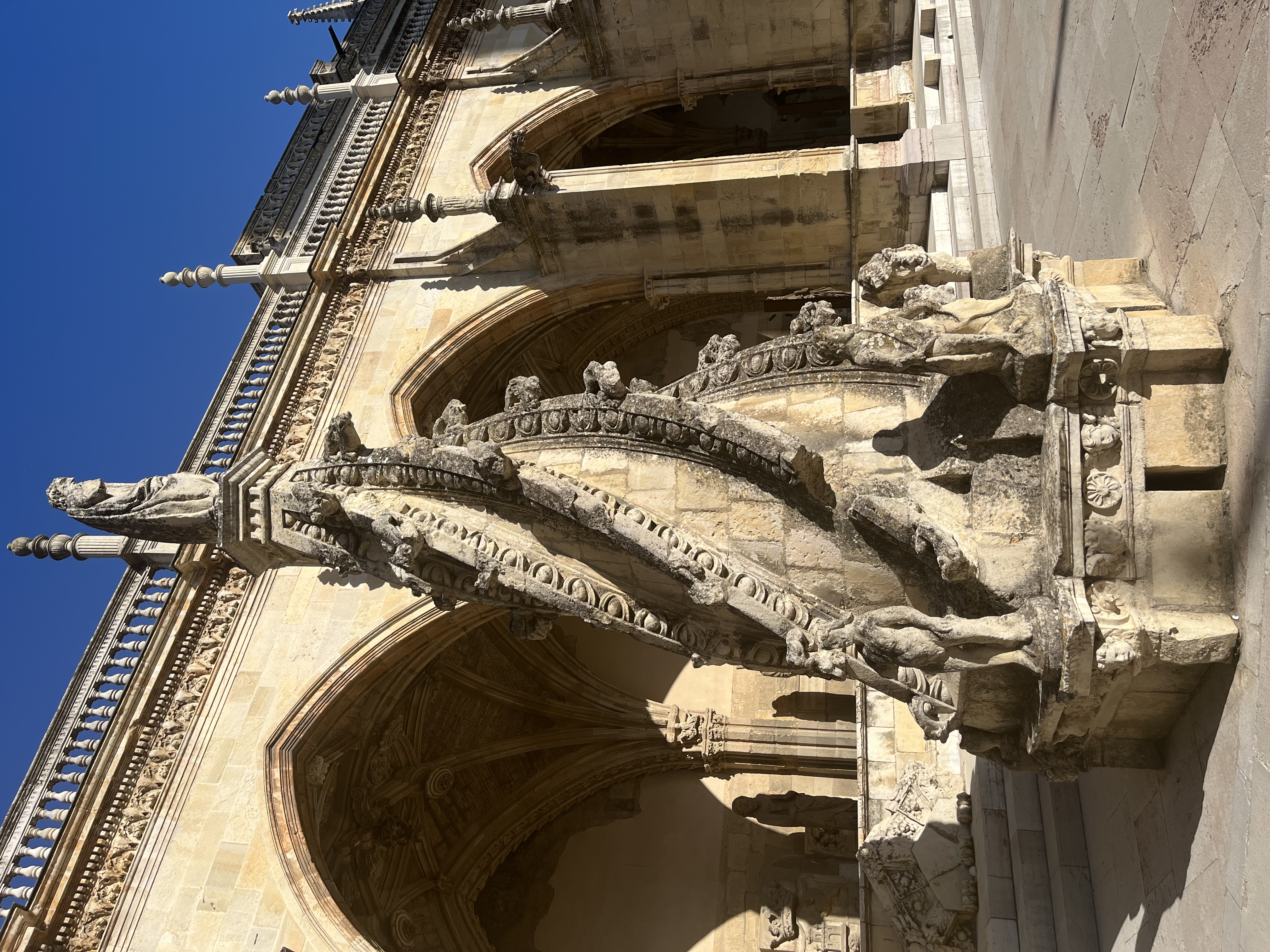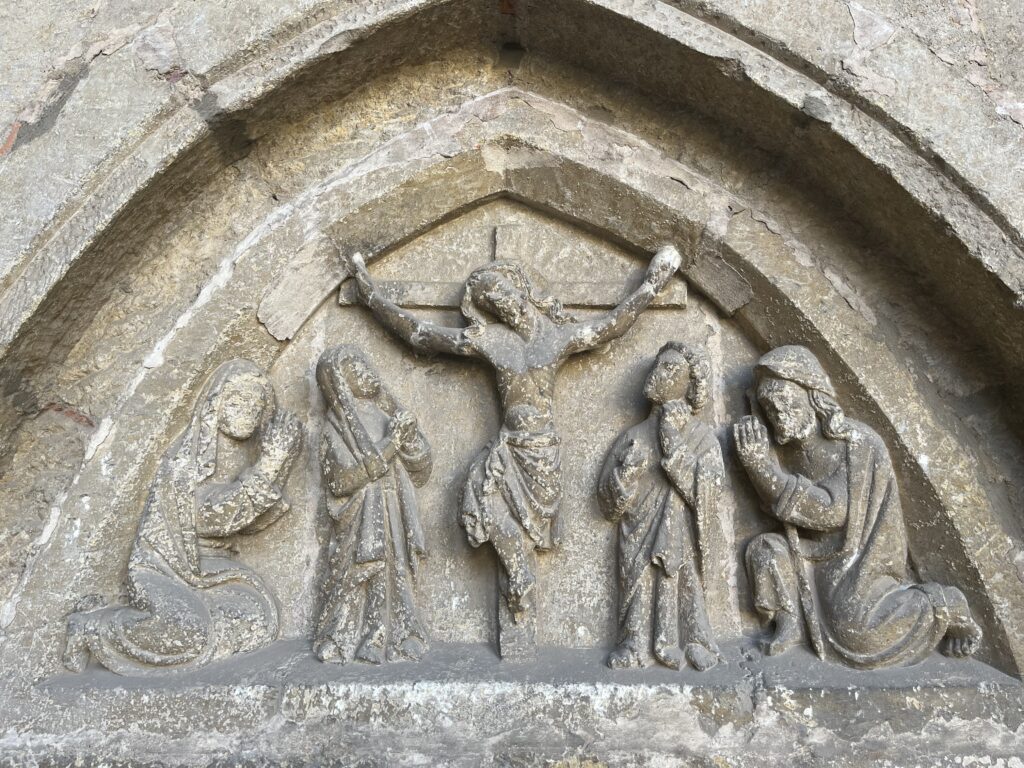Via Podiensis: León
For no good reason, I was awake and packed before 6:30 AM. We left at 7 AM precisely, and soon Tara and I were walking through urban sprawl.
It was cold enough that I wore gloves.
At some point, the Camino passed a picnic area and veered right, following the usual wide white gravel path. In the darkness, I couldn’t see much around, but it was definitely relatively open fields.
We entered village of Arcahueja about 7:50. It’s the kind of town that has a bar, but no church. It looked very suburban.
After the town, we again found ourselves on the ubiquitous white gravel road. It was light enough by now that no flashlight was required. Ahead we could already see the urban and suburban landscape surrounding the city of León – in fact in just a few minutes we were walking through it.
After a bit, we were doing that whole “fun path next to the highway walking” thing. At some point, we rounded a curve and saw the city itself laid out before us. To the right we could see the cathedral towering over the nearby apartments.
After this, it was basically walking through neighborhoods and parks.
At 9:20 AM, we went through the Puerta Moneda – a gate in the old city walls – and so entered the medieval part of Leon.
Just twenty minutes later, we had wound our way through the narrow medieval streets to the plaza in front of the great cathedral.
After entirely too long a delay, we had breakfast in the nearby café.
We decided to skip the cathedral until this afternoon, when we could see the light properly coming in through the windows. Instead, we went to the nearby Basilica of Saint Isidore.
We spent a little while in there in adoration, prayer, and wonderment. Saint Isidore of Seville is entombed there at the high altar, and above him is a monstrance with the Eucharistic Lord.
Like the cathedral in Lugo that Francine and I visited last year, the Basilica has Perpetual Adoration.
I prayed here for the intentions of the Camino here.
Next, we visited the attached museum, which was just amazing. No photos were allowed, so afterwards I bought a book. Because of course I did. I suppose I’ll have to post that home now.
The museum is housed in a building that used to be a monastery attached to the Basilica. I mean, I suppose it is still a monastery, as I think there are still monks living there, but the majority of it is now a museum.
In the crypt are buried many of the Kings of León. Above their tombs are intact and unrestored Romanesque frescoes covering the ceilings.
These are some of the most beautiful and amazing medieval frescoes I have ever seen. They’re the kind of thing that you see and think, “I’m gonna slap the next guy who calls these the ‘dark ages'”.
Afterwards, we checked into the Benedictine albergue, which at €8 is the least expensive hostel I’ve seen on the entire Camino.
After this, it was time for lunch. Fortunately, there is a handy restaurant directly across the street from the albergue. The cathedral wasn’t due to reopen until 4 PM, so Tara and I split up to explore the town on our own. I wandered the streets looking at the people, and the architecture of the buildings, and the endless shops. Without fail, I would wander down some apparently little used alley and end up in a tiny little plaza – usually with a (locked) parish church – with cafés and shops, bustling with people and activity.
I eventually made my way back to the monastery for a little rest.
And finally, it was time to visit the Cathedral. The Cathedral of Santa María de León is one of the great Gothic cathedrals of the world. It was constructed entirely within the last half of the 13th century, under the direction of one master architect. There is more stained glass in this building than any other cathedral in the world, excepting only Chartres.
There is, as you might expect, a unity and wholeness in this building that is almost unique amongst the churches I have visited here. While it is true that the side chapels have elements of later architecture, the fabric and the feel of this church is almost entirely Gothic.
The architectural lines are pure and delicate. The windows are absolutely stunning in their thoughtfulness and detail, down to differences in color of glass being used depending on where the sun falls in any given season.
Except during Masses and Holy Week, the cathedral is basically given over to the public as a museum, but there are no exhibits other than the cathedral itself, presented as a single and unified work of art.
I prayed for the intentions of the Camino here, amidst the chaos of pilgrims and the tourists, but all the noise and busyness of people wandering around somehow did not distract so much as focus the prayer. For here, in this perfect church, was the Church herself wandering around in awe.
I hope the photos do it some justice, but honestly it’s impossible to get enough in frame.
Date: 10 October 2023
Place: León
Today started: Puente Villarente
Today’s Photos!
